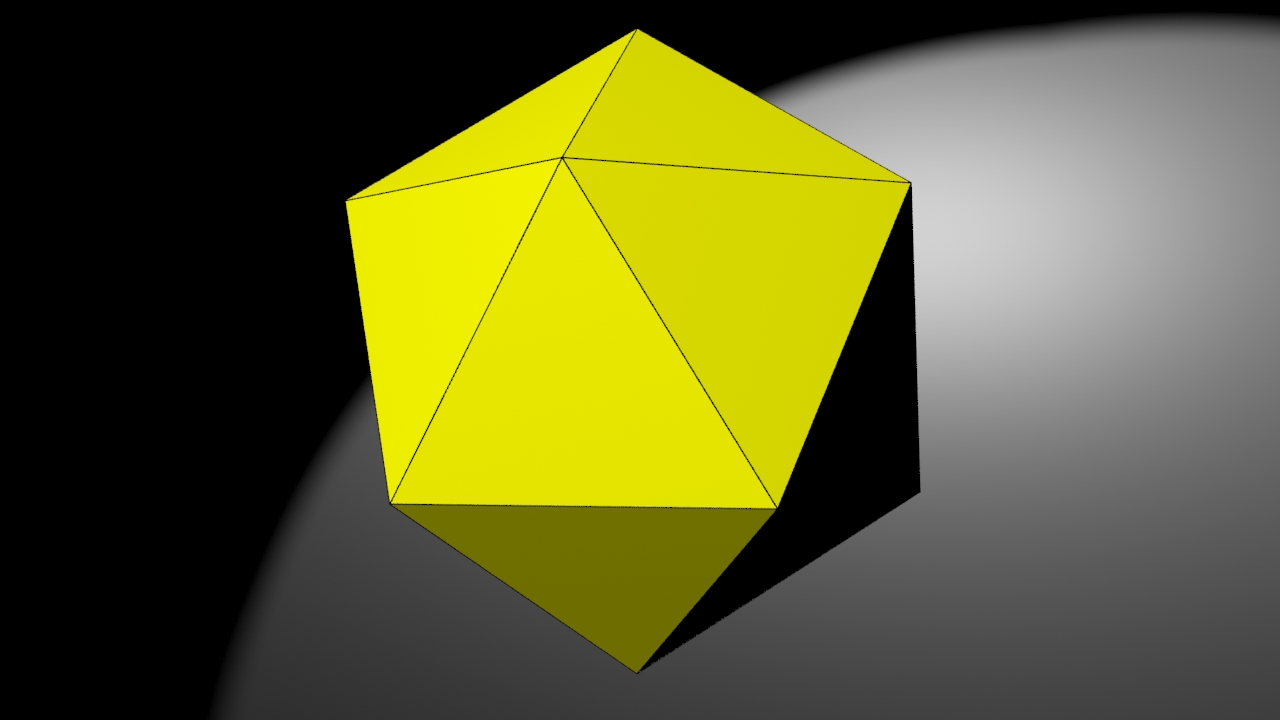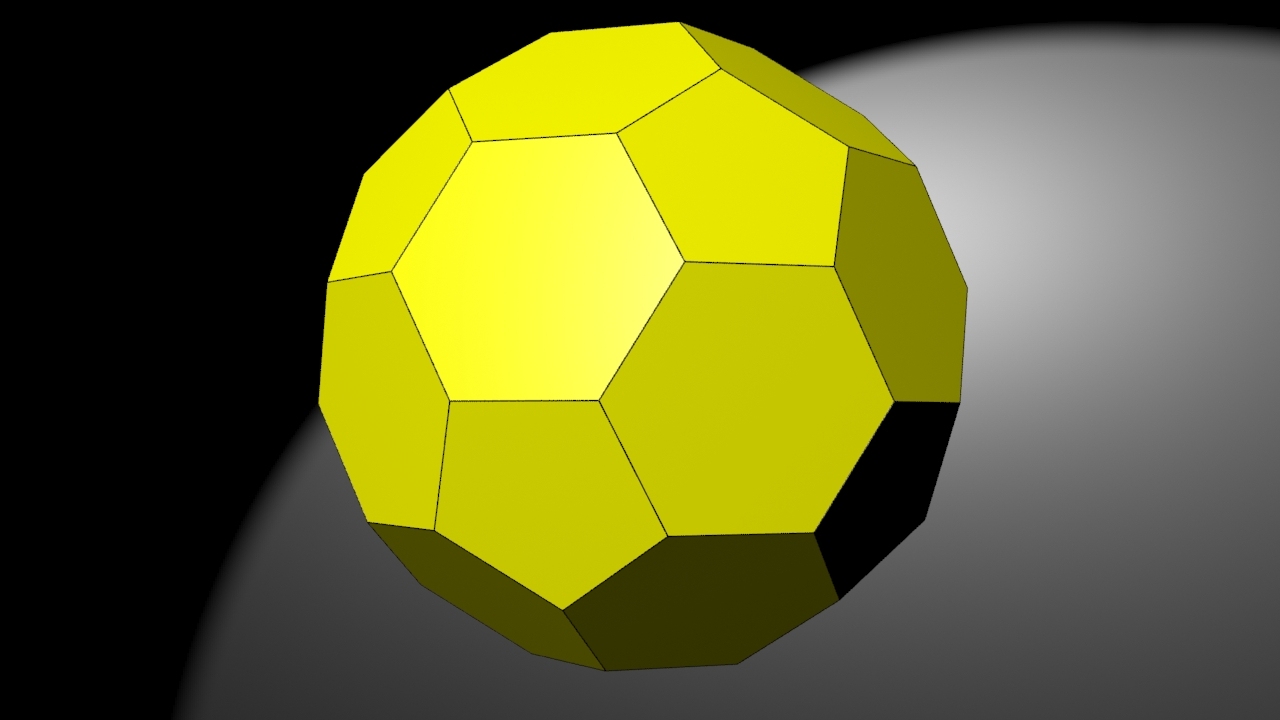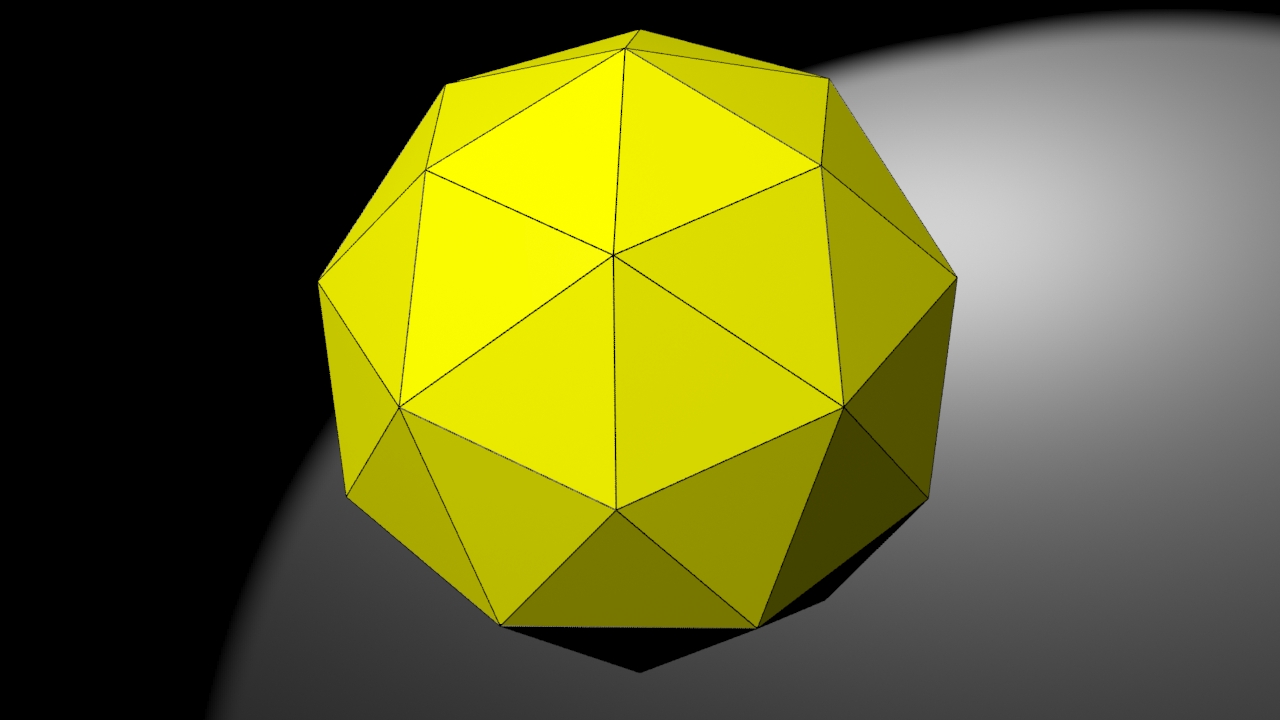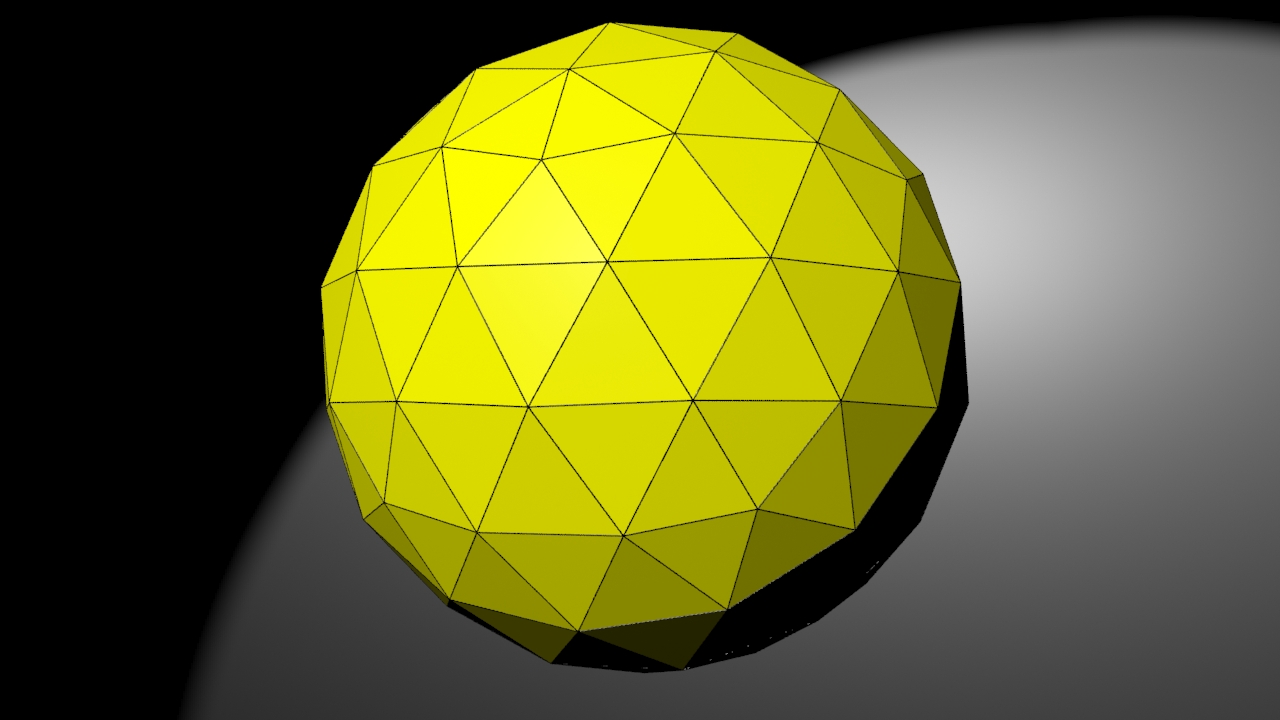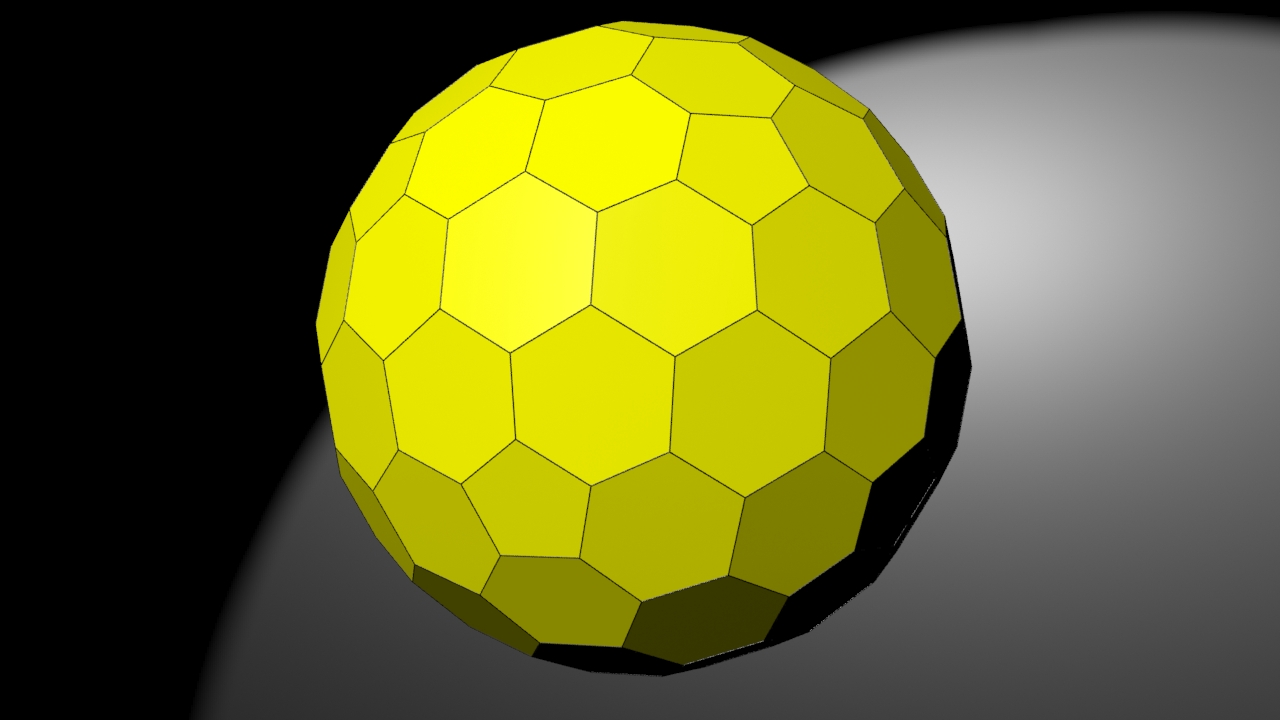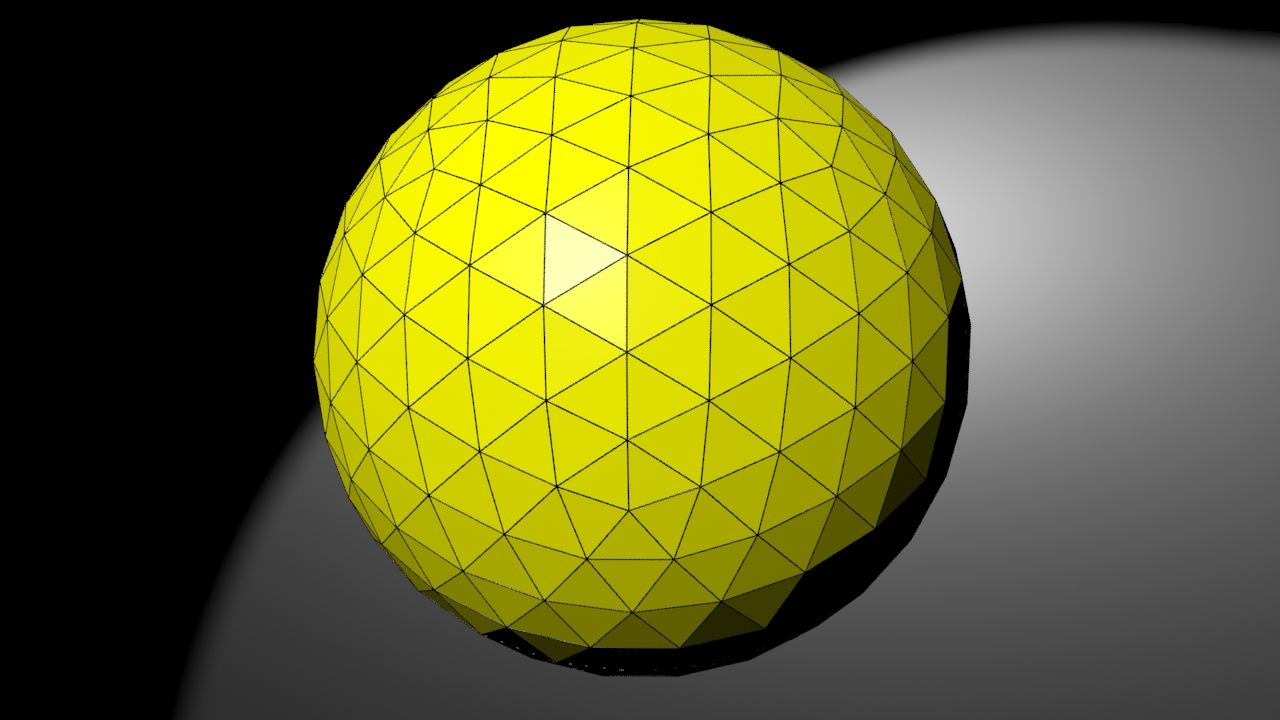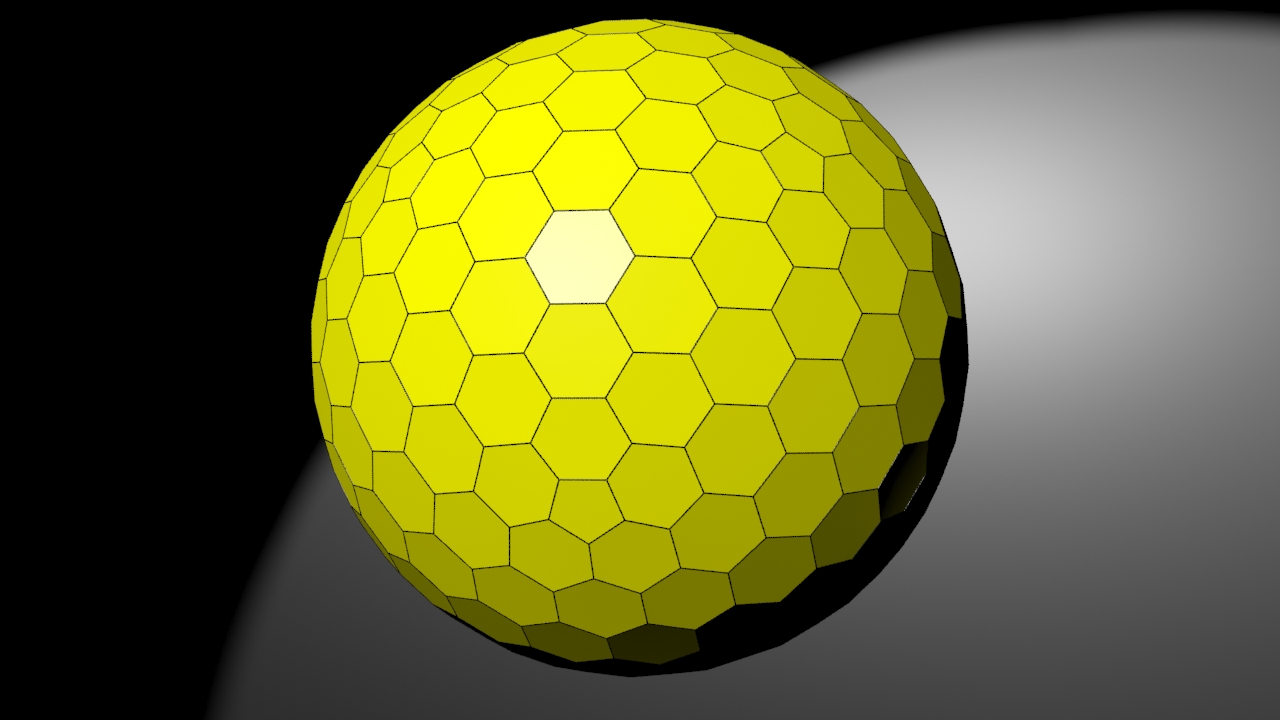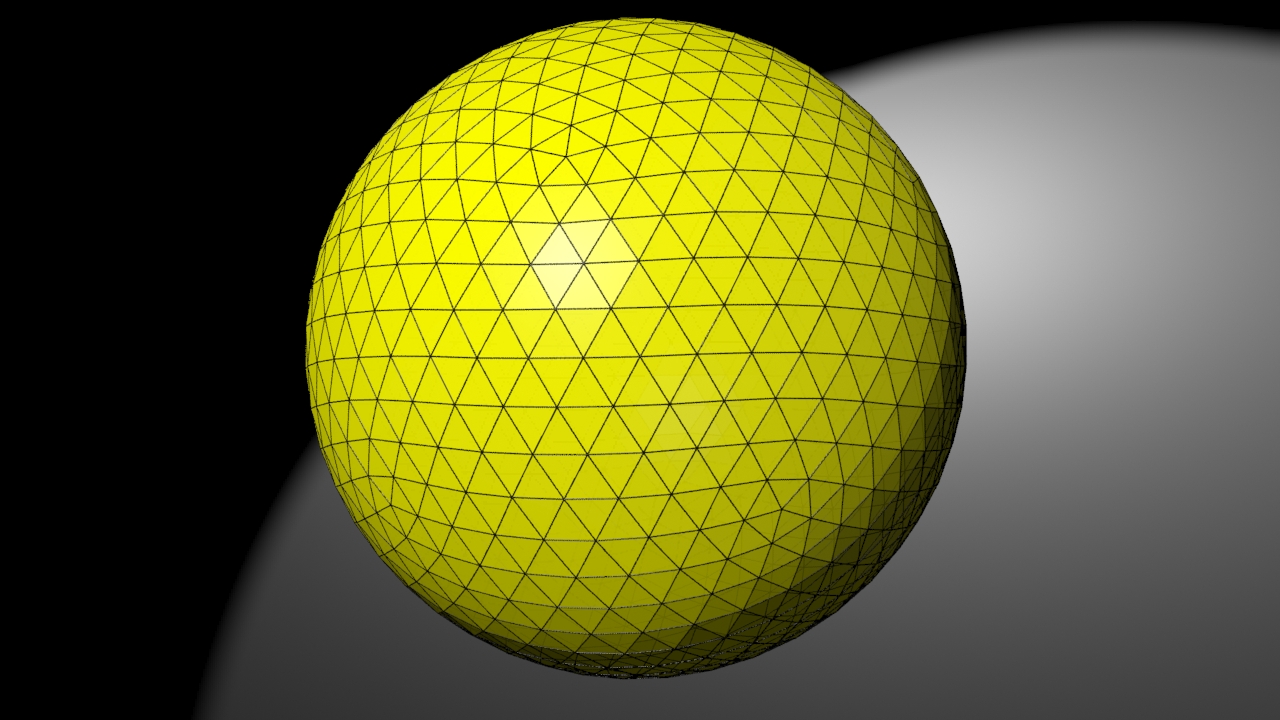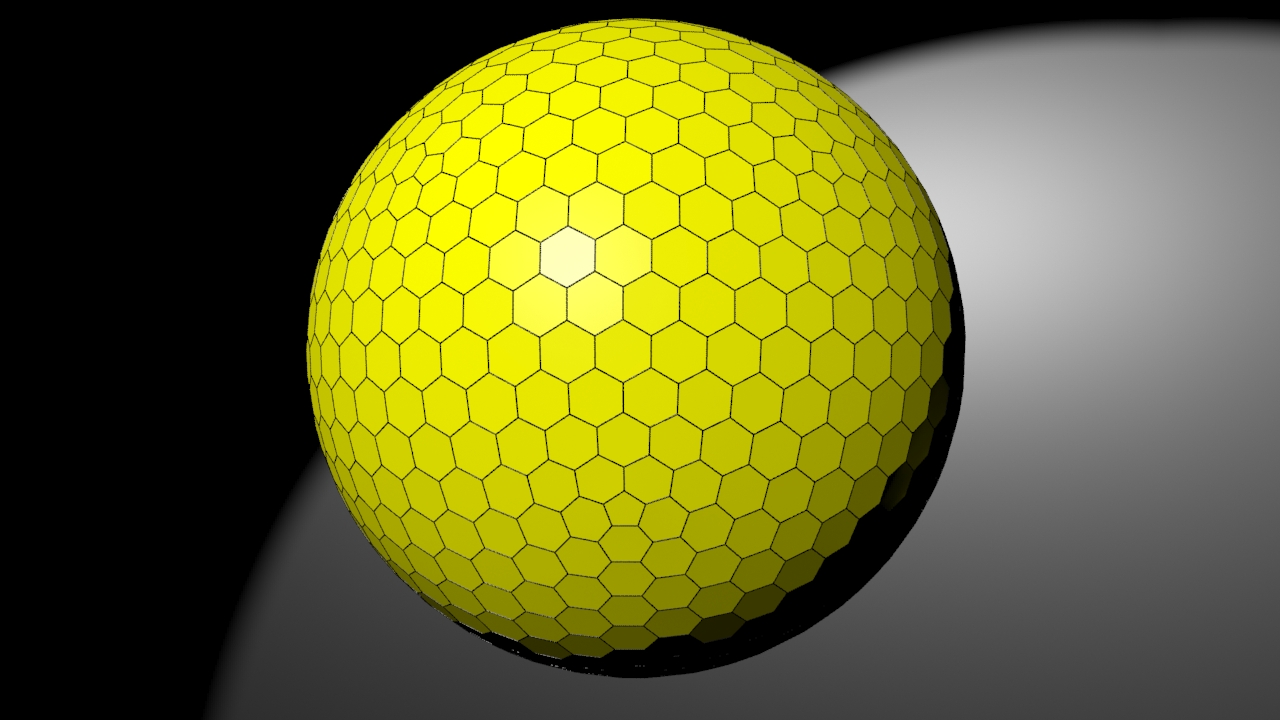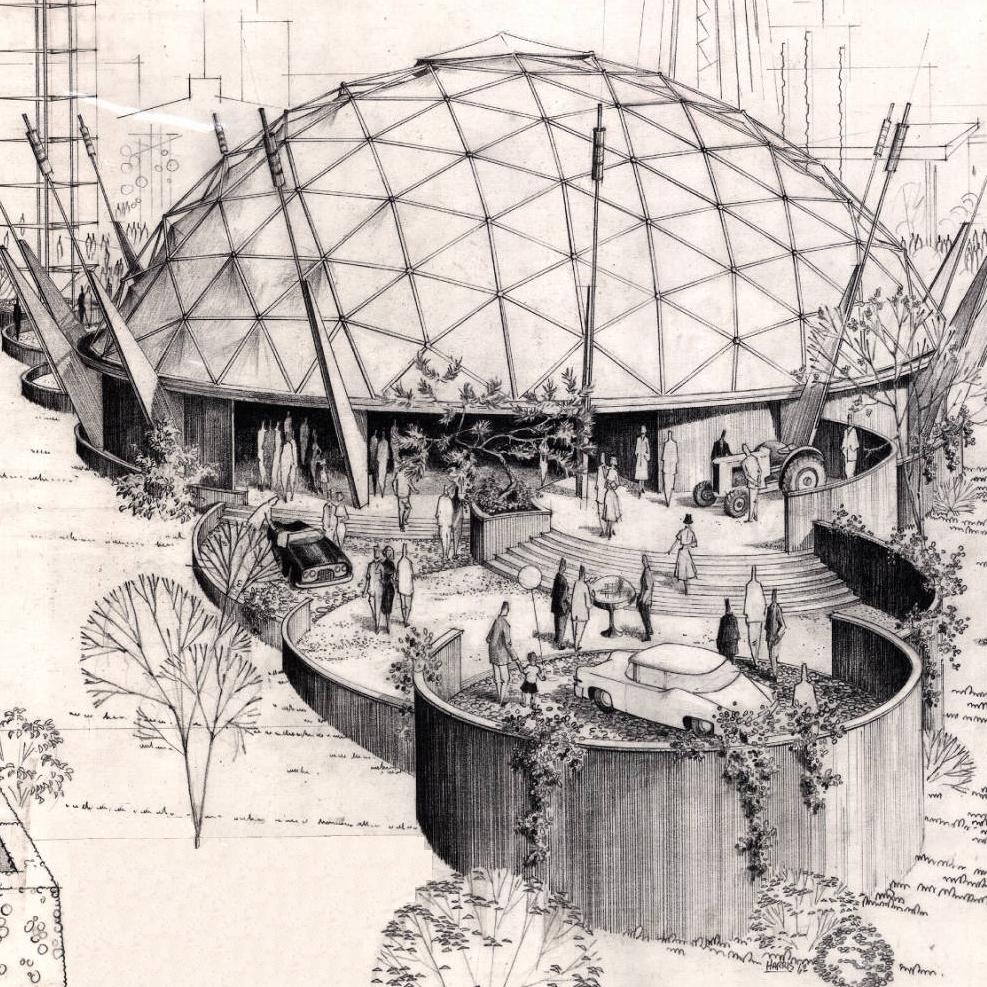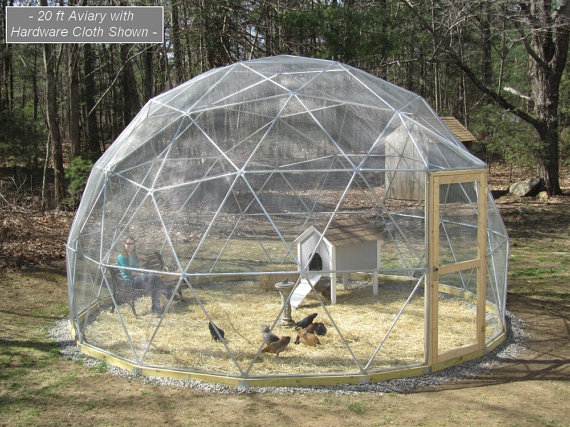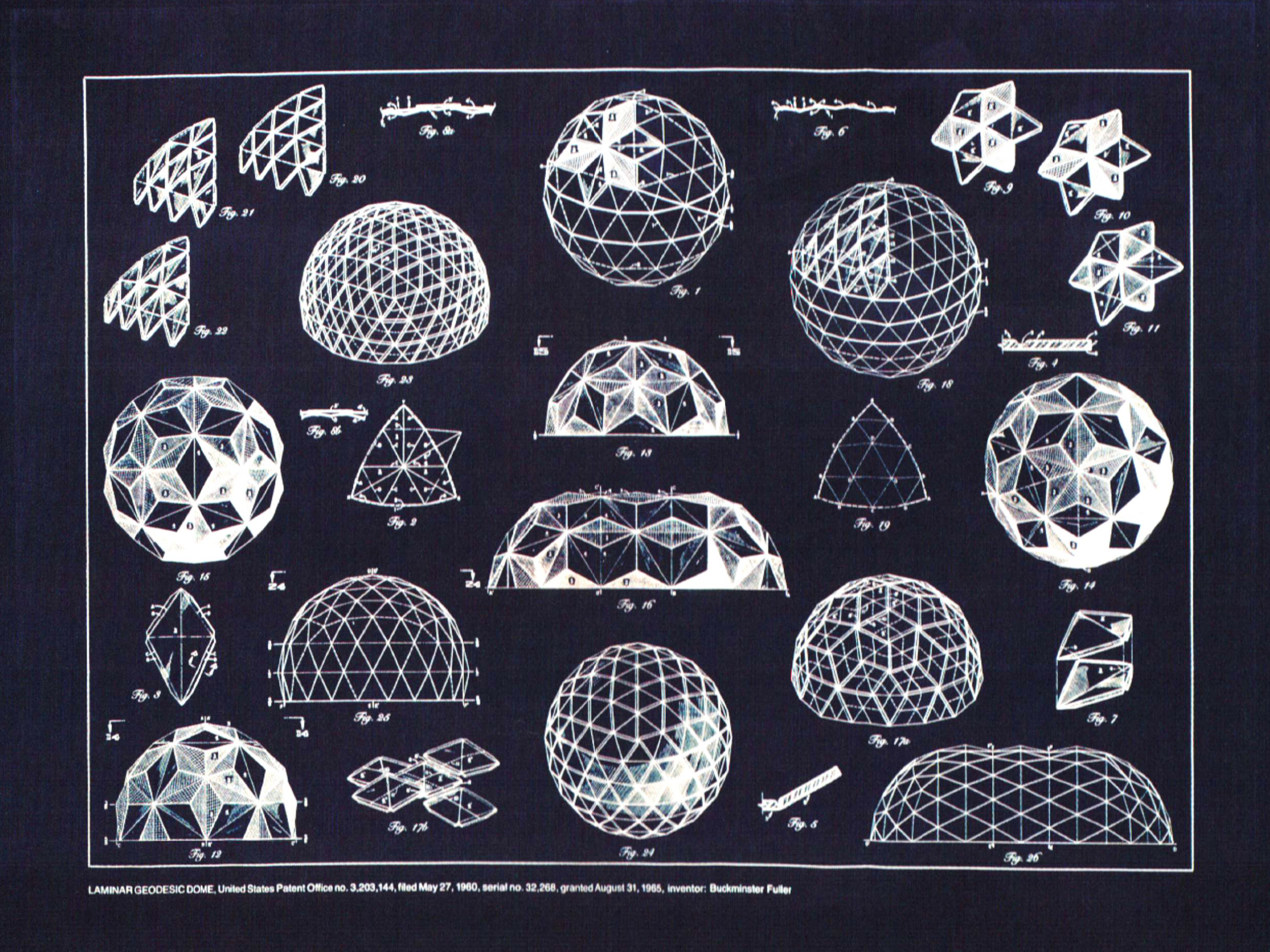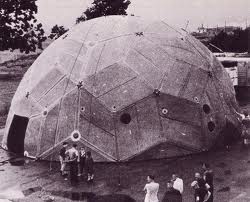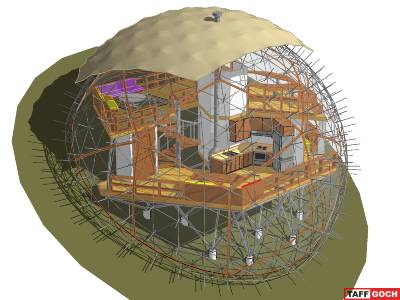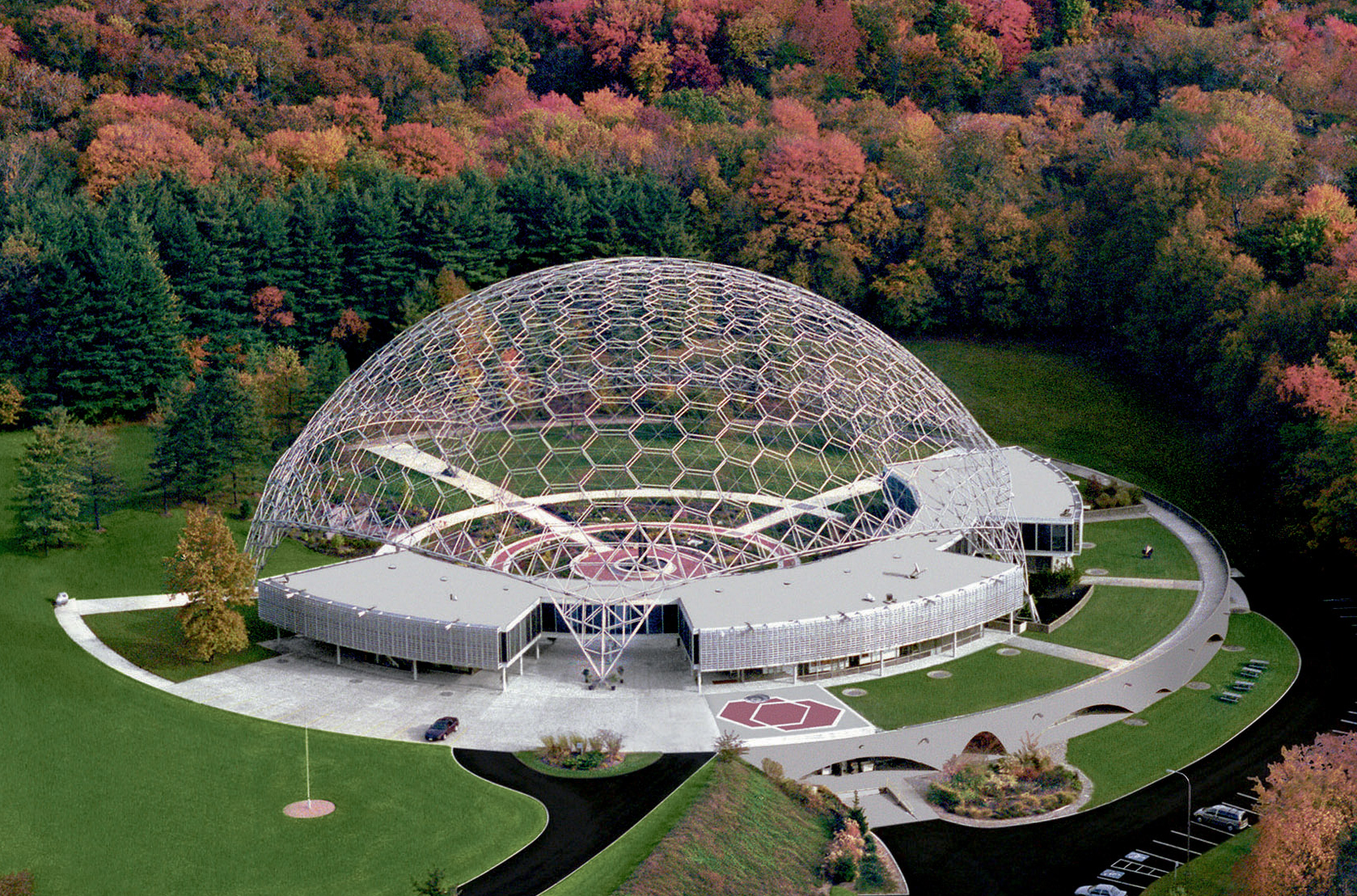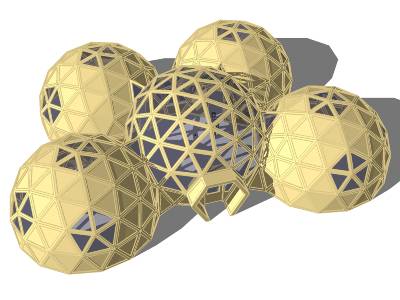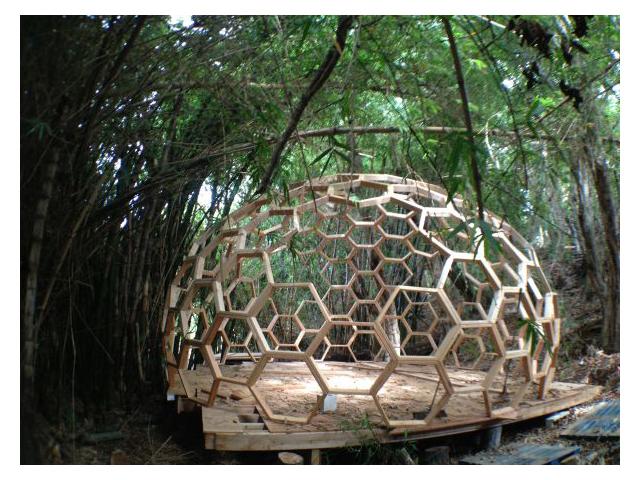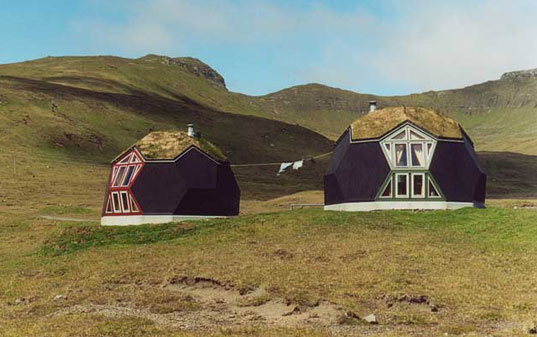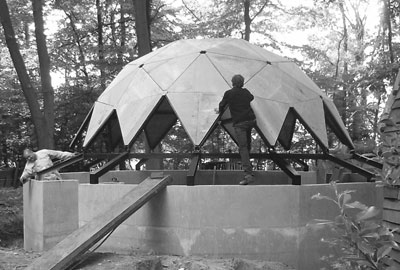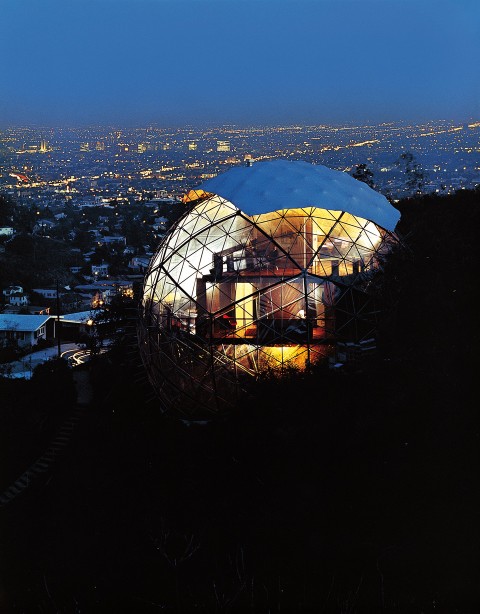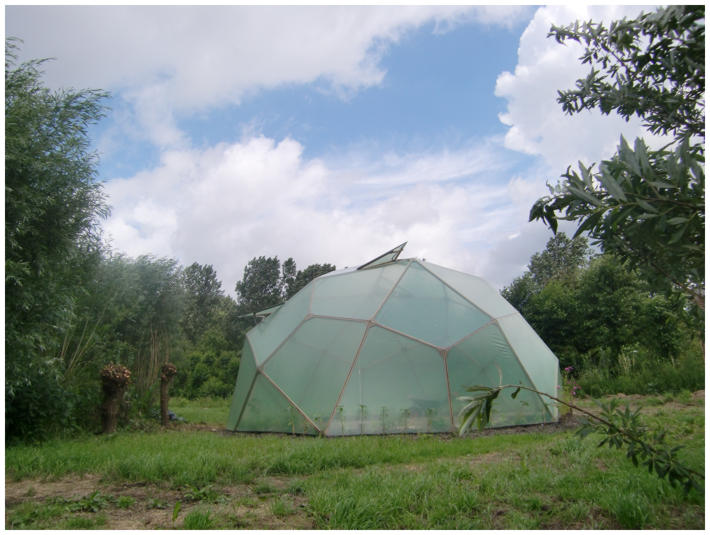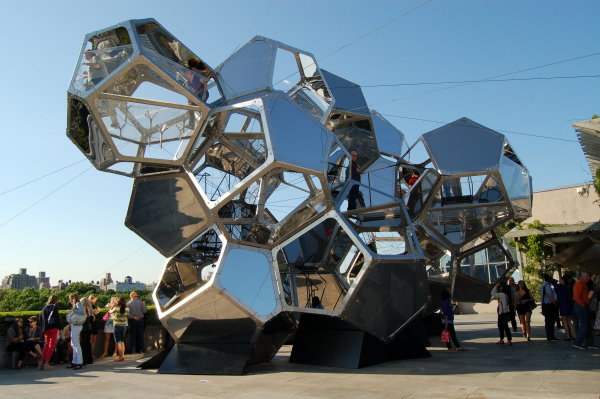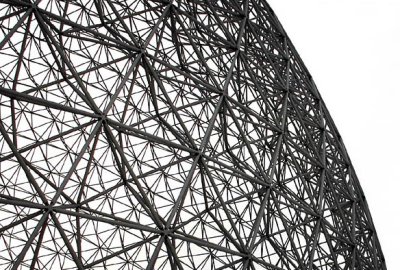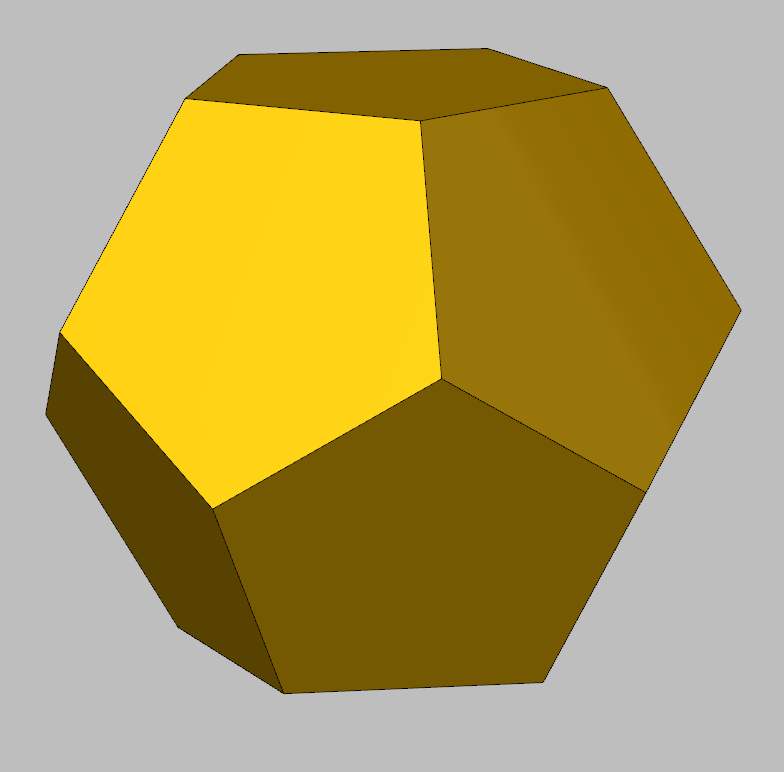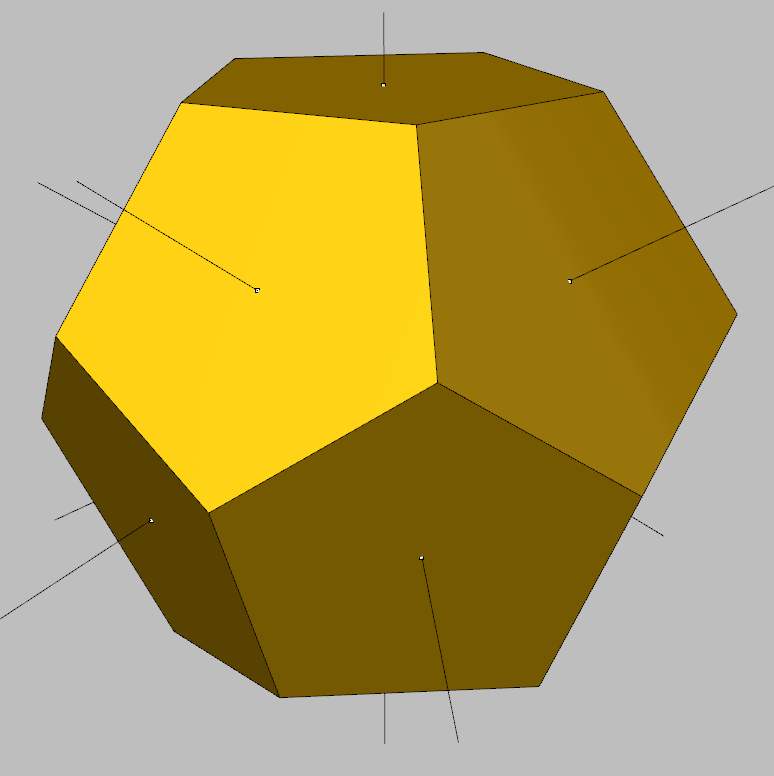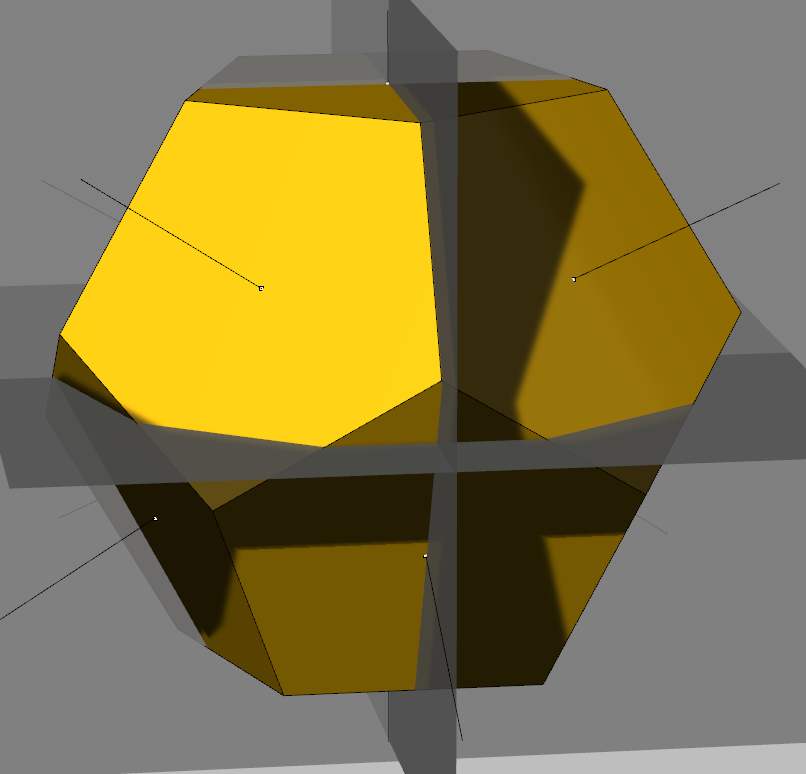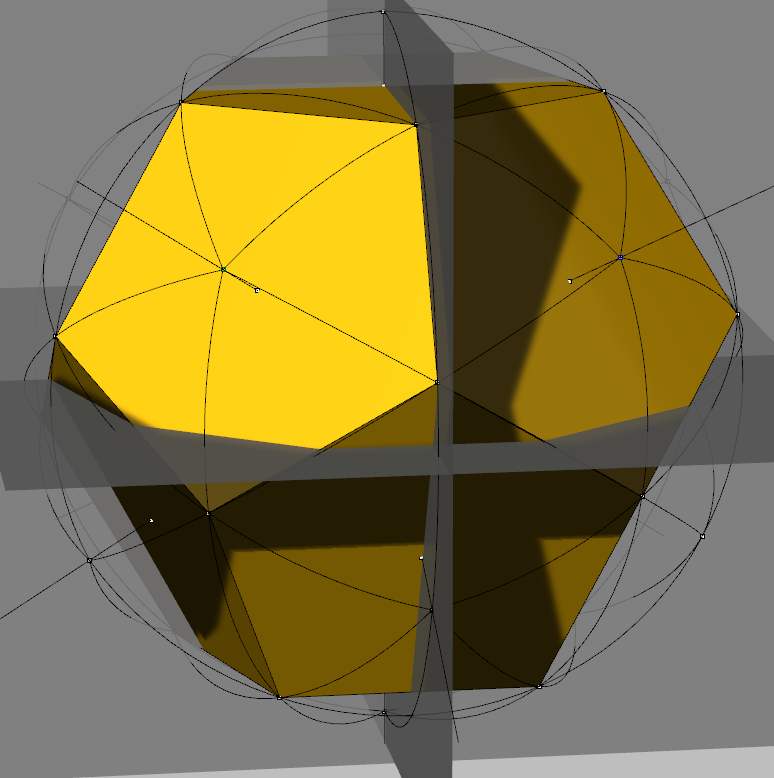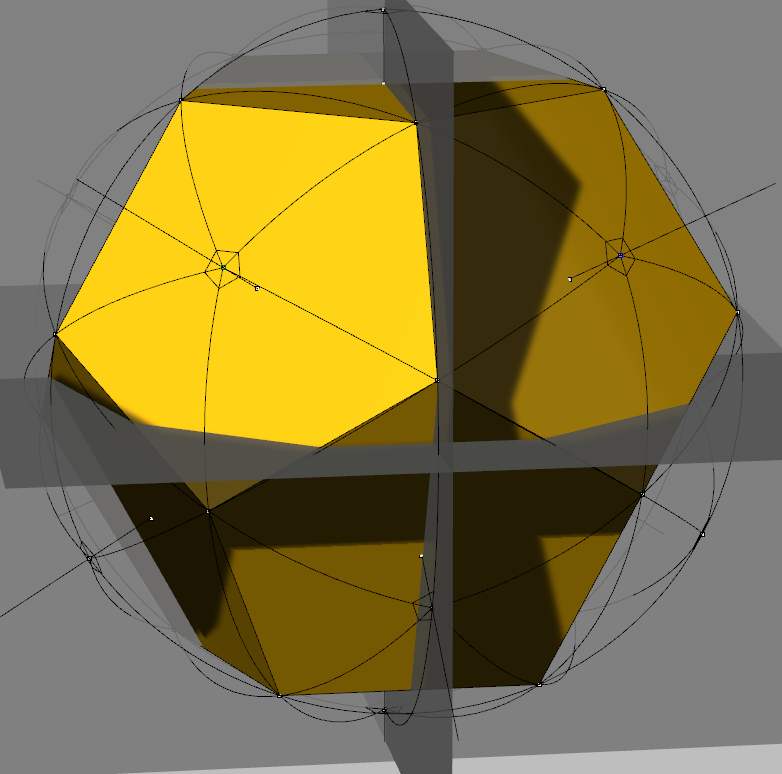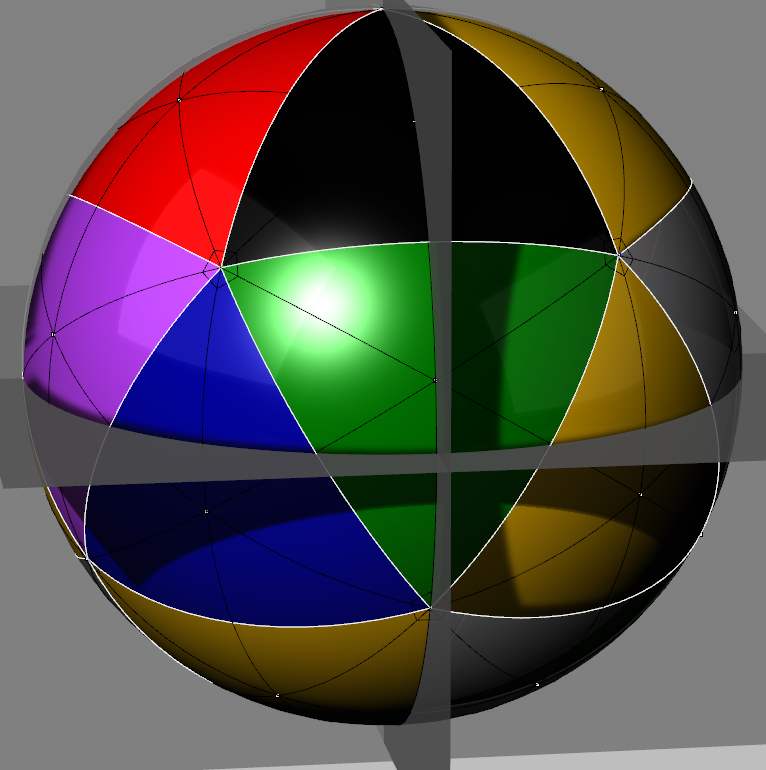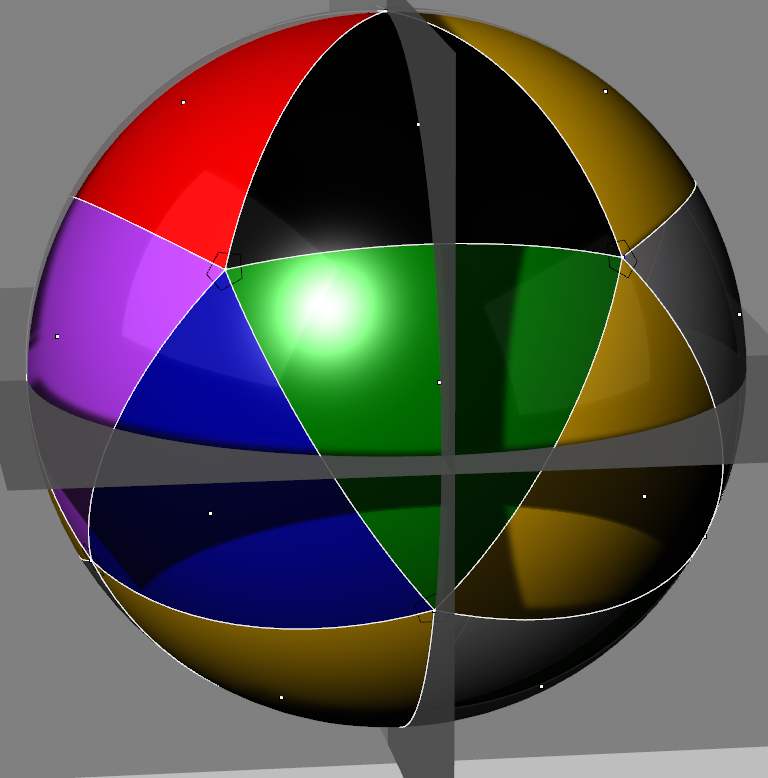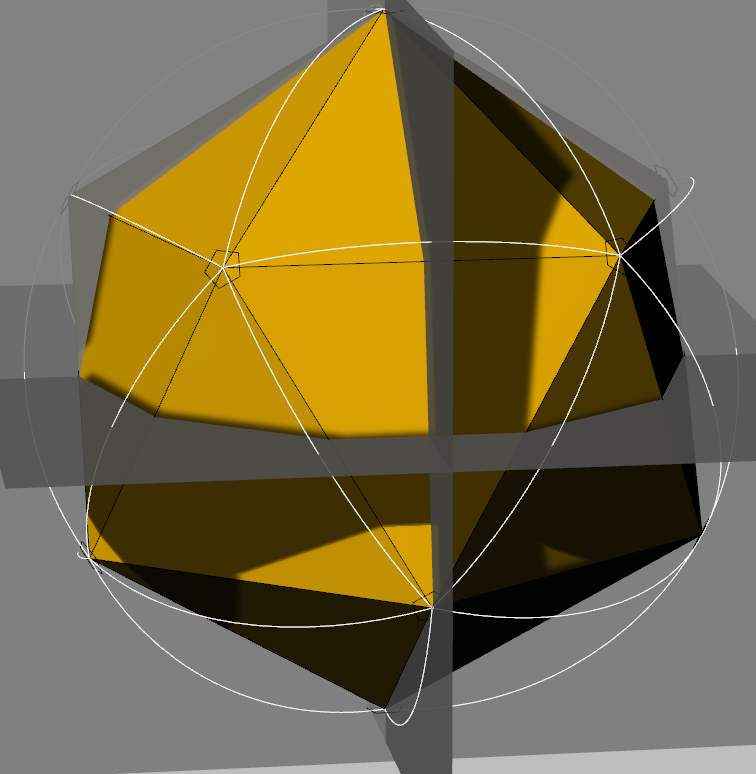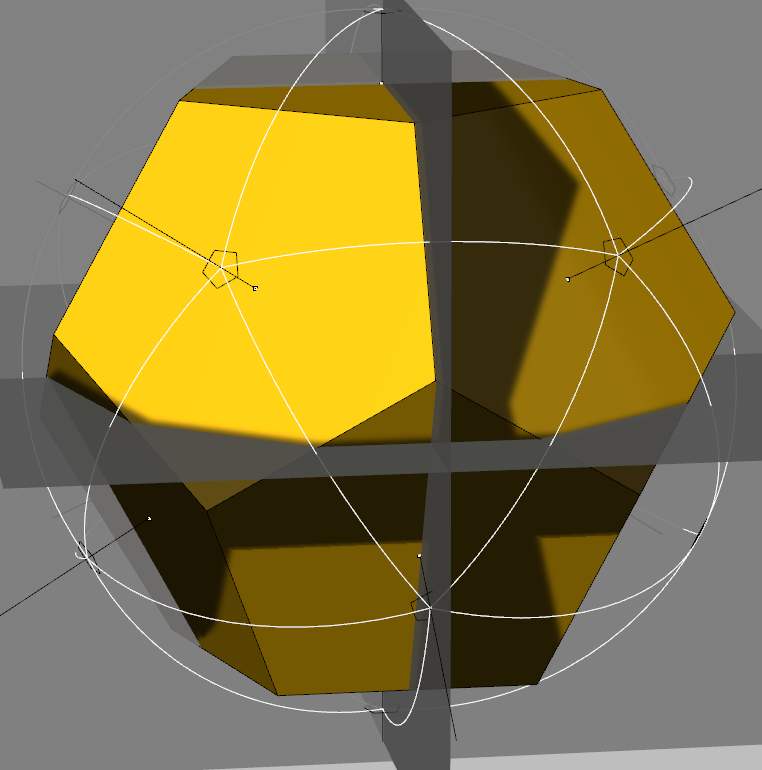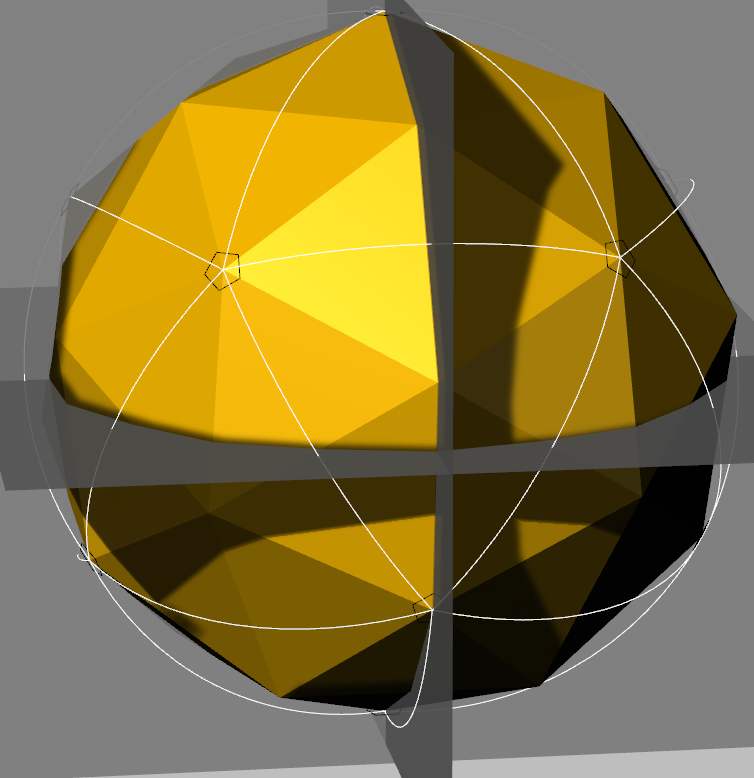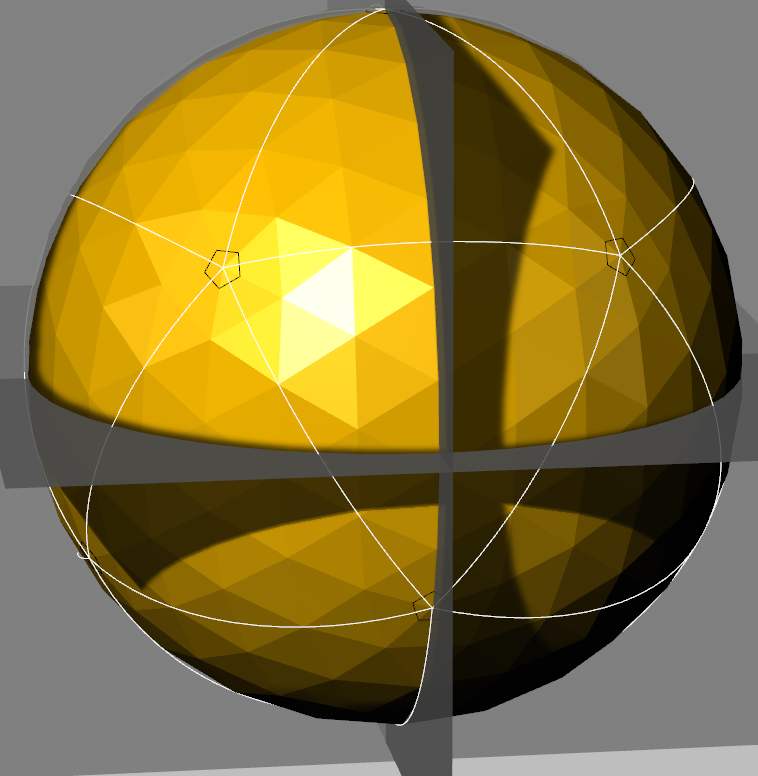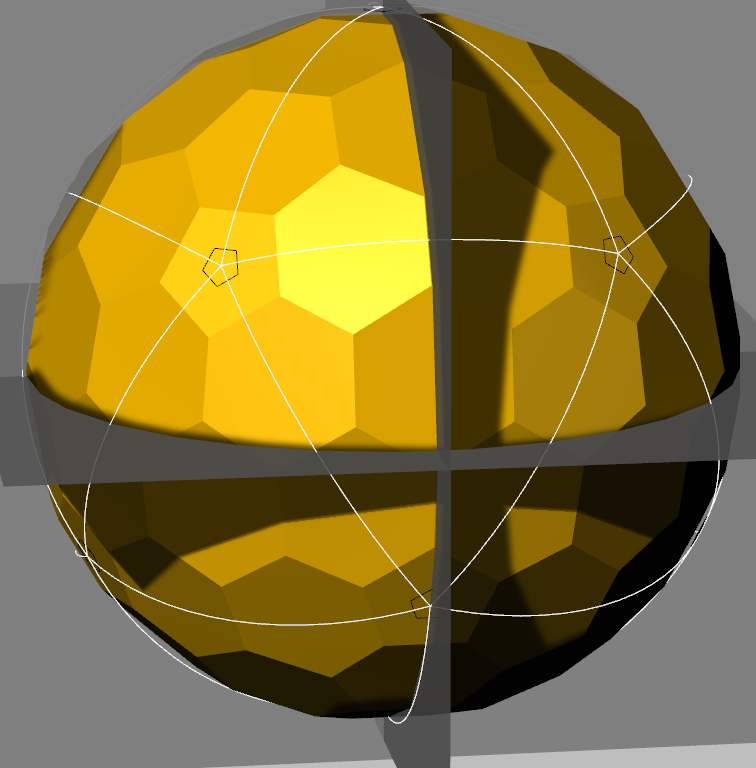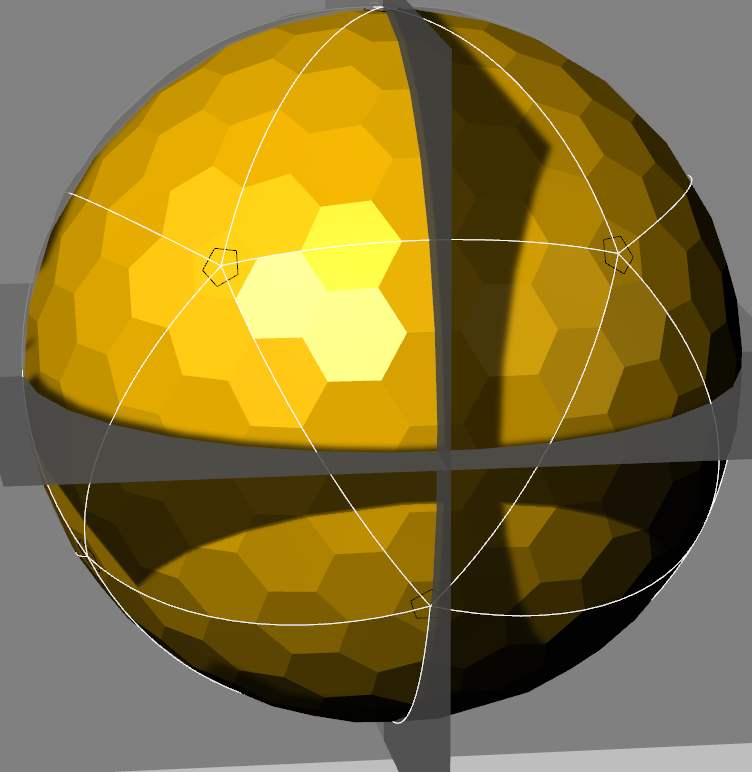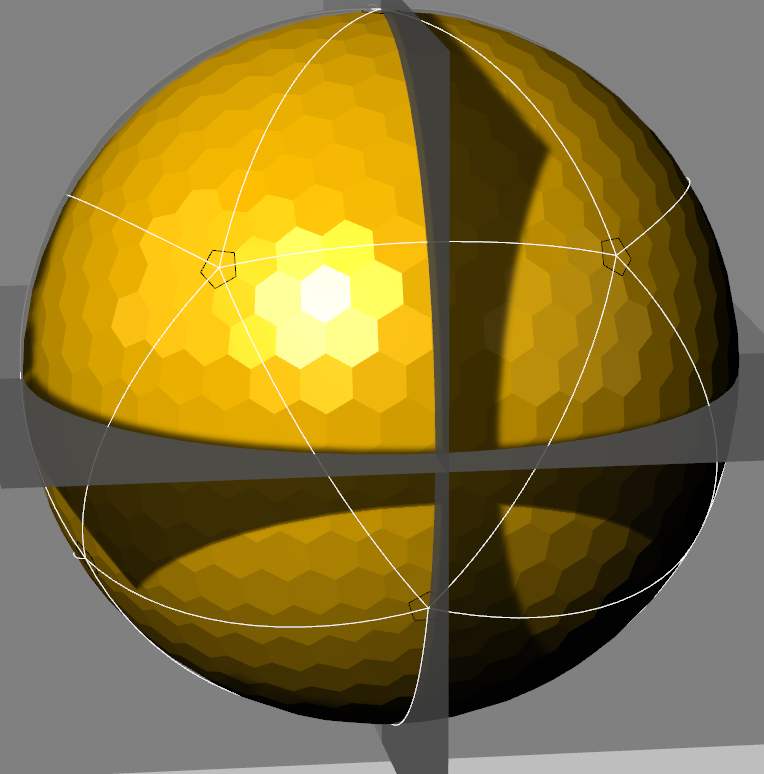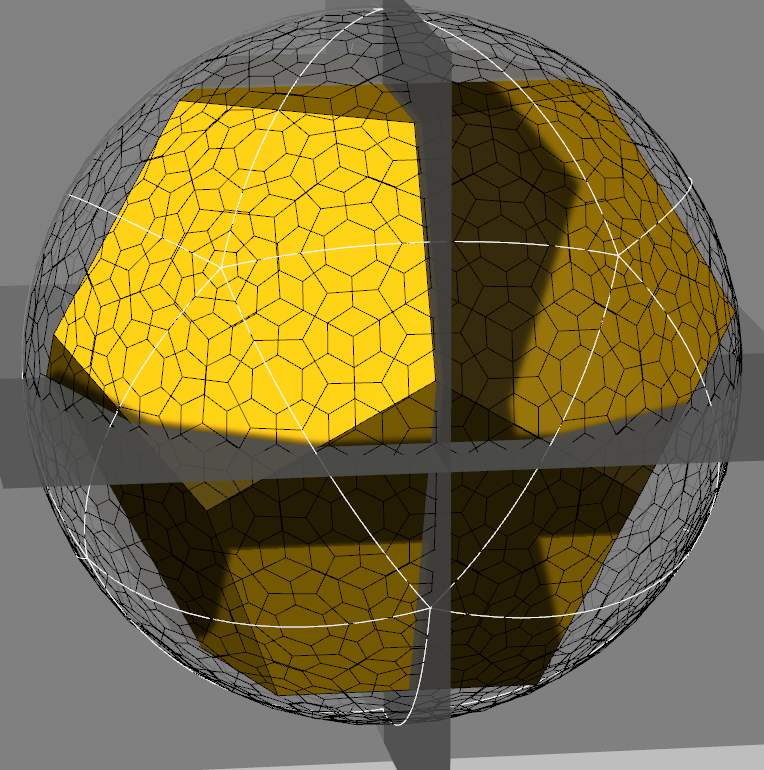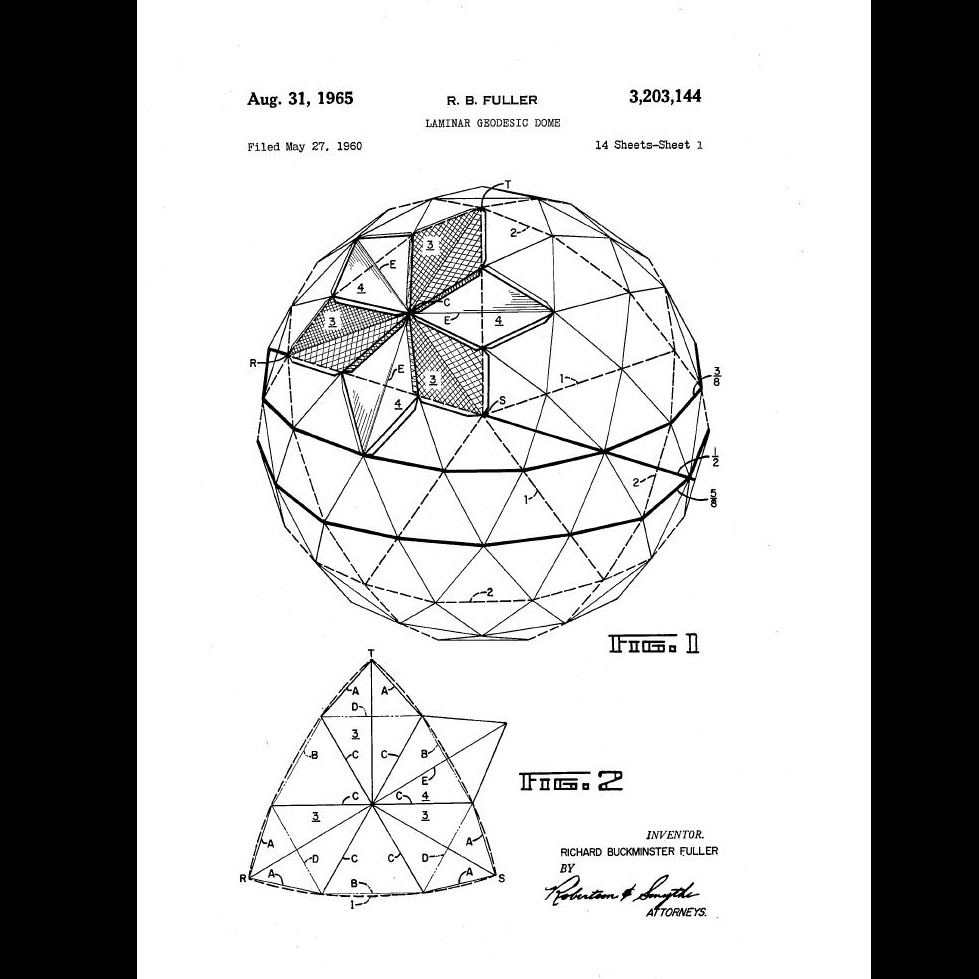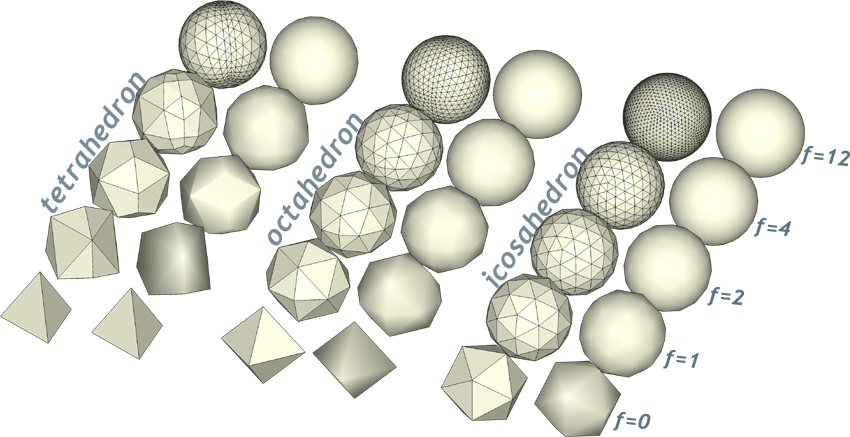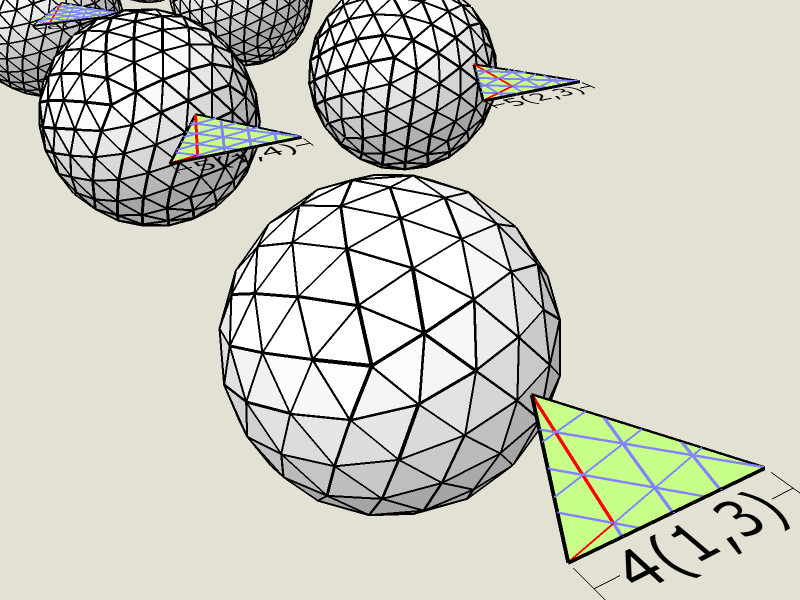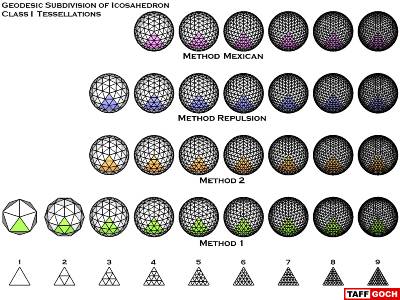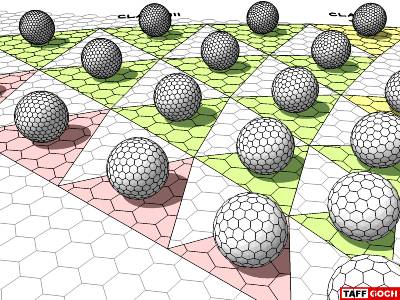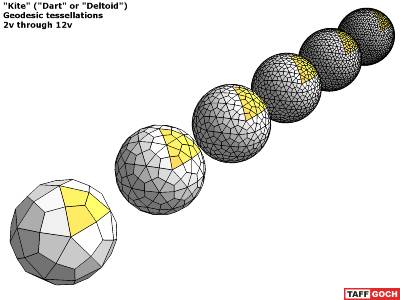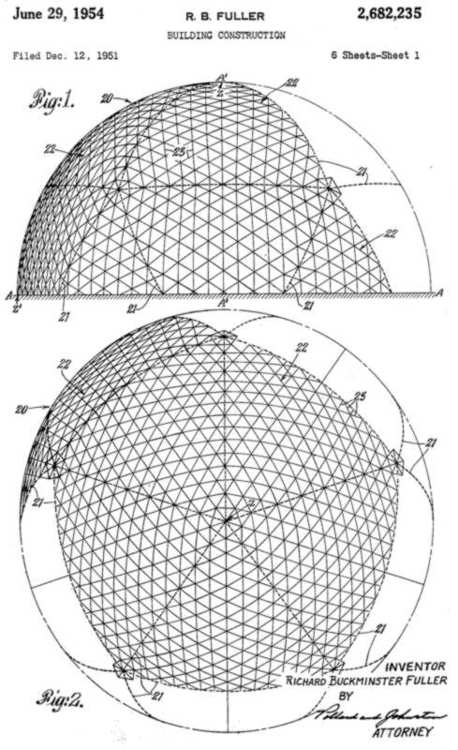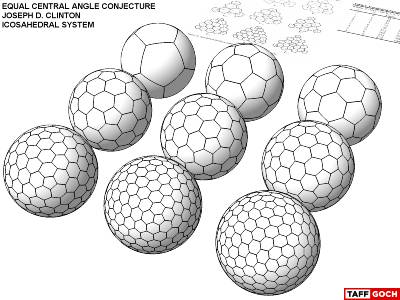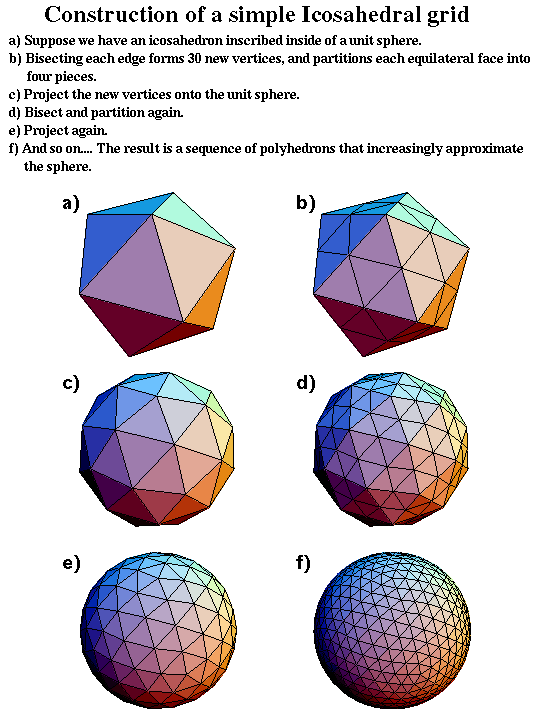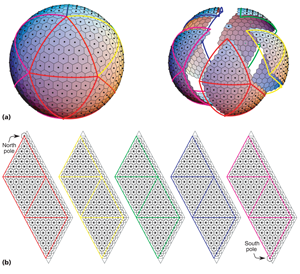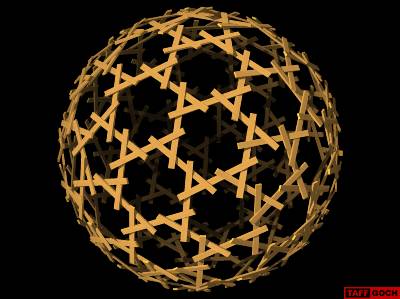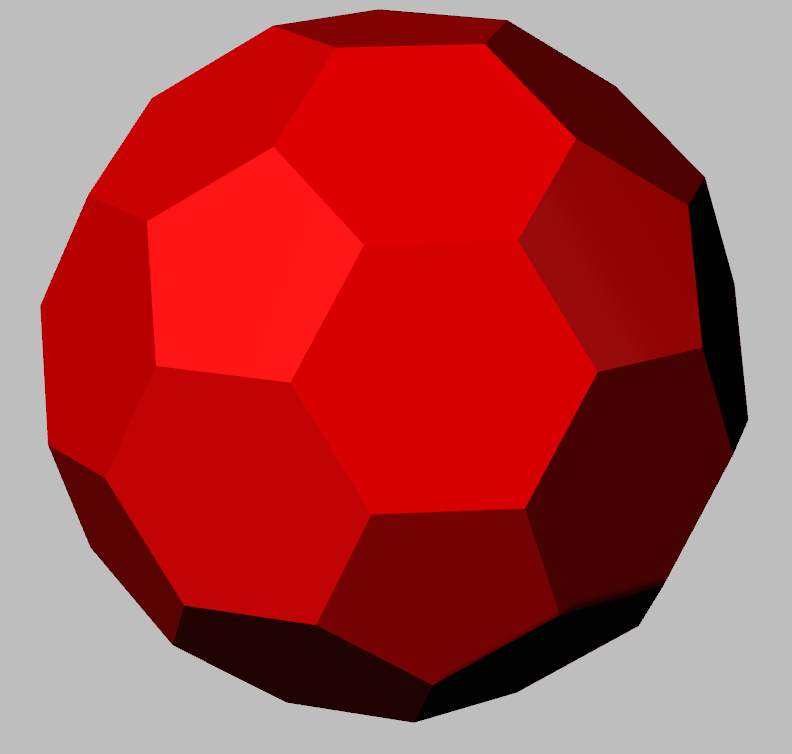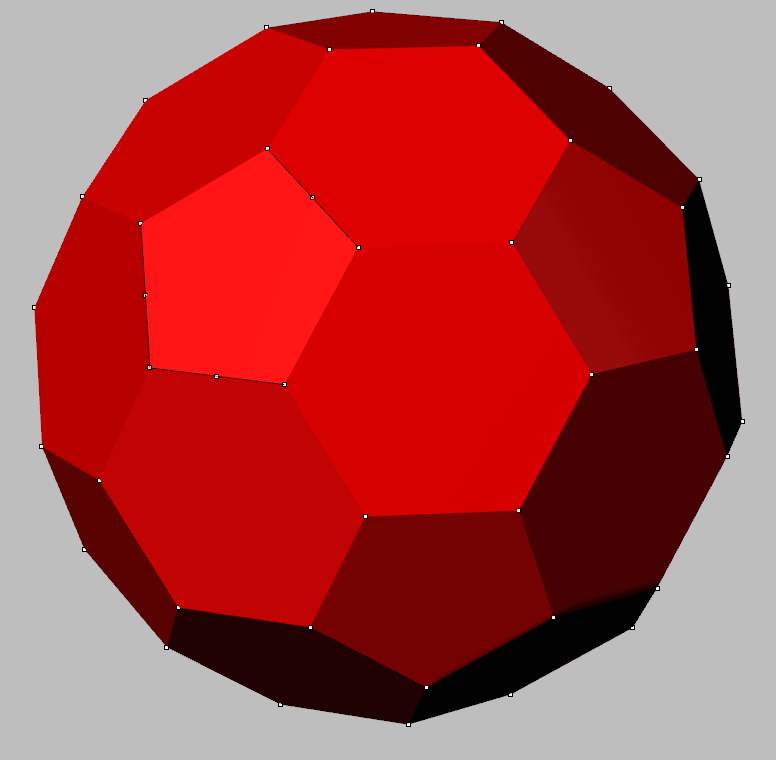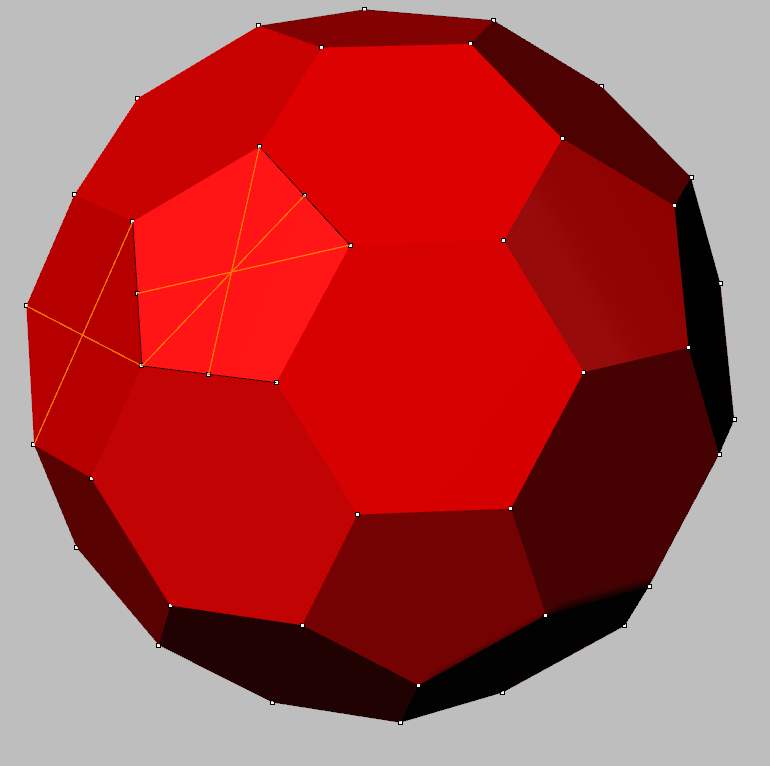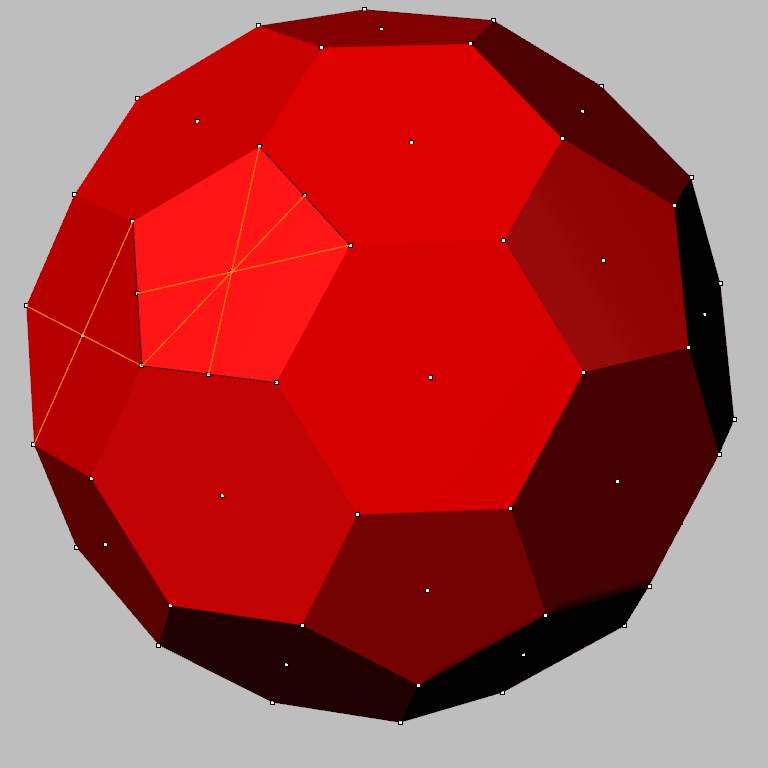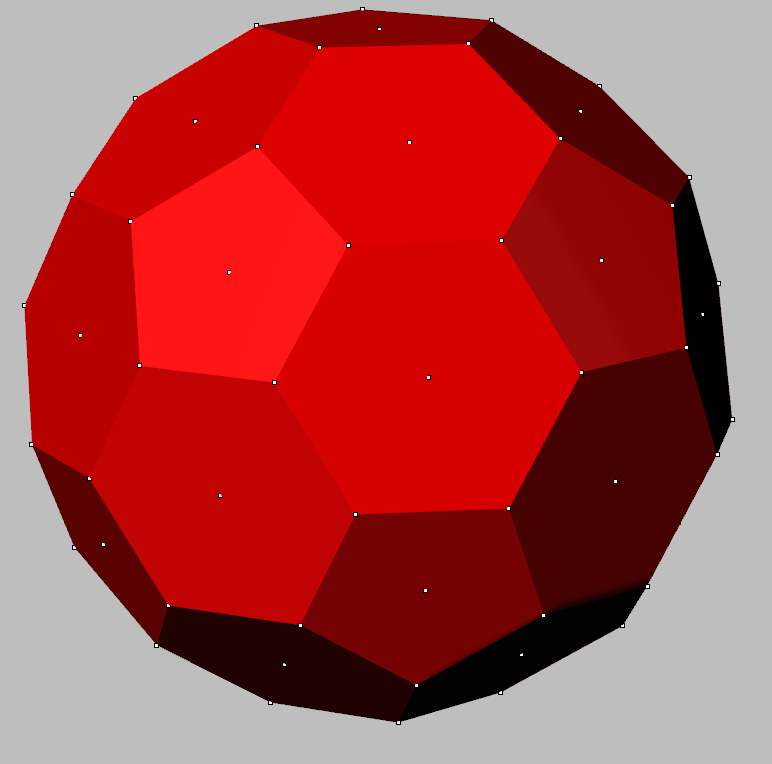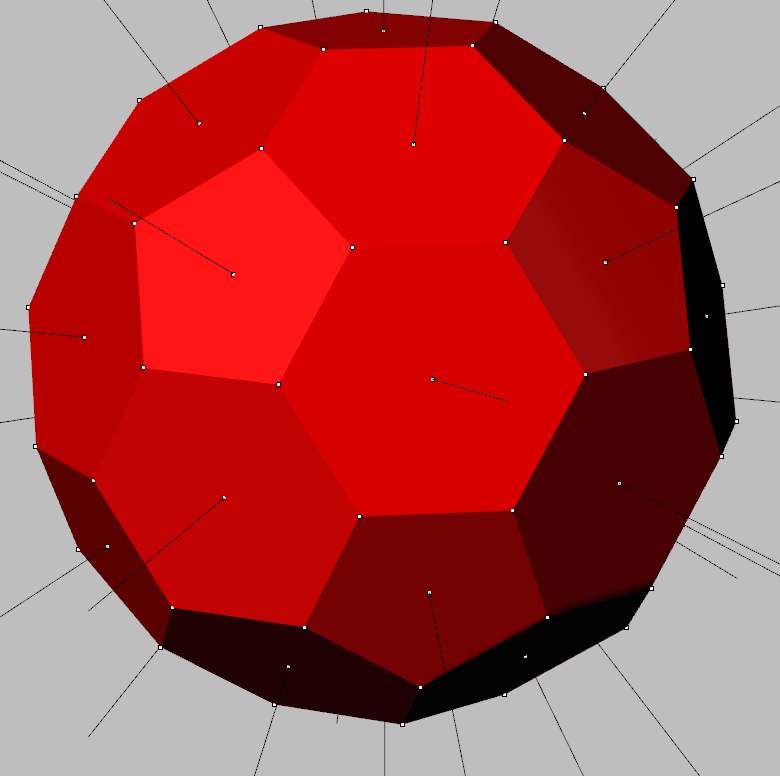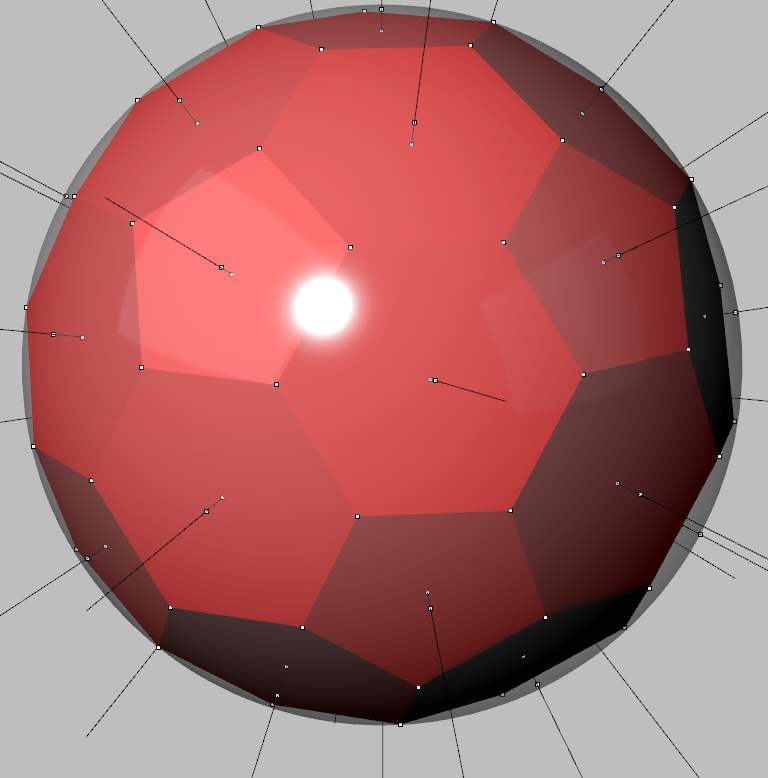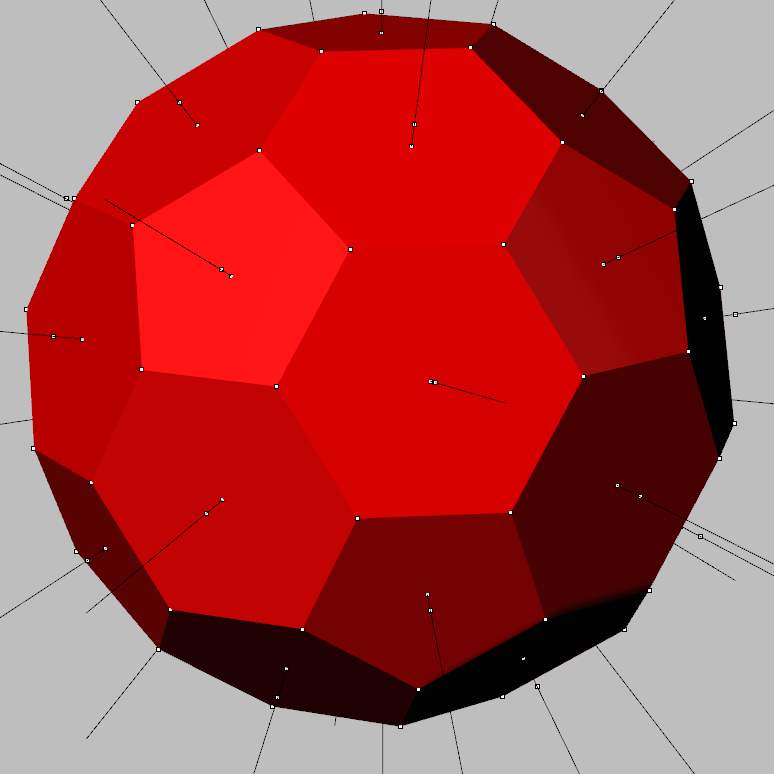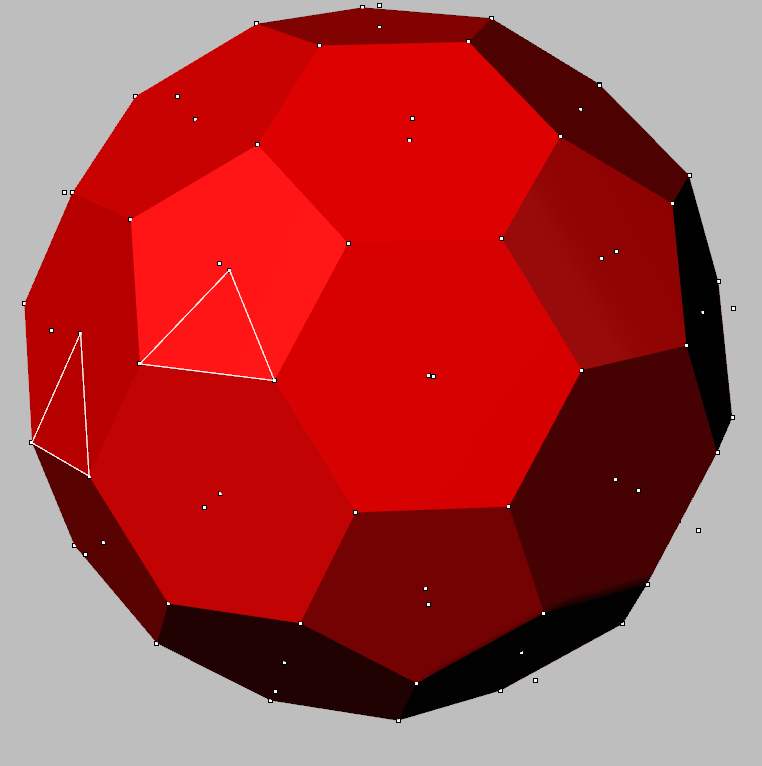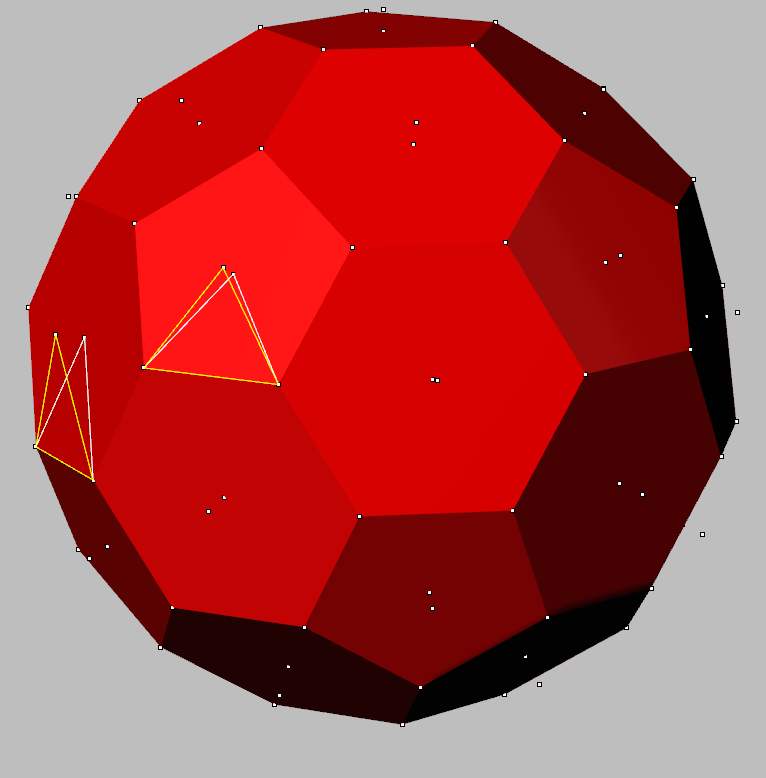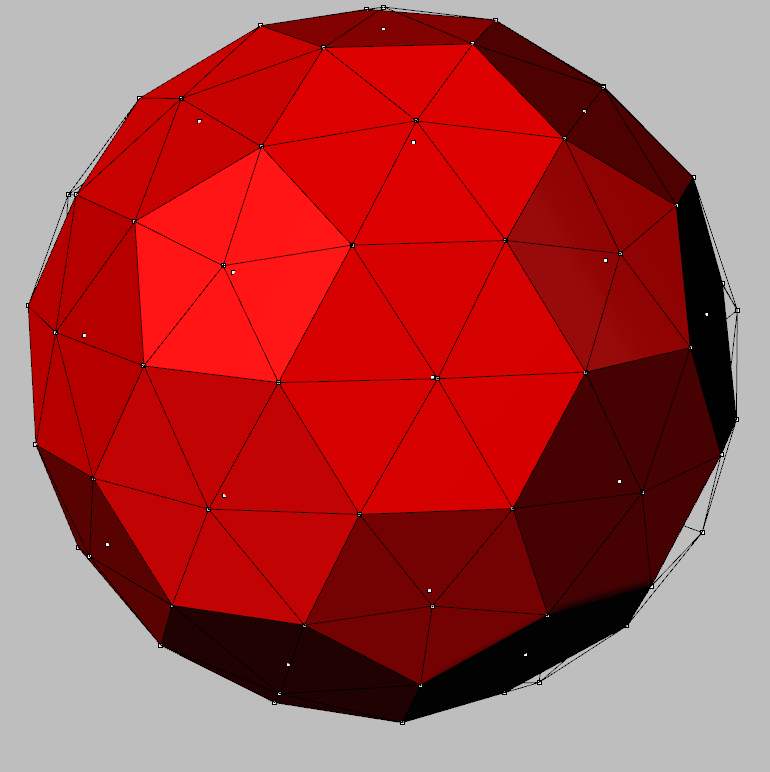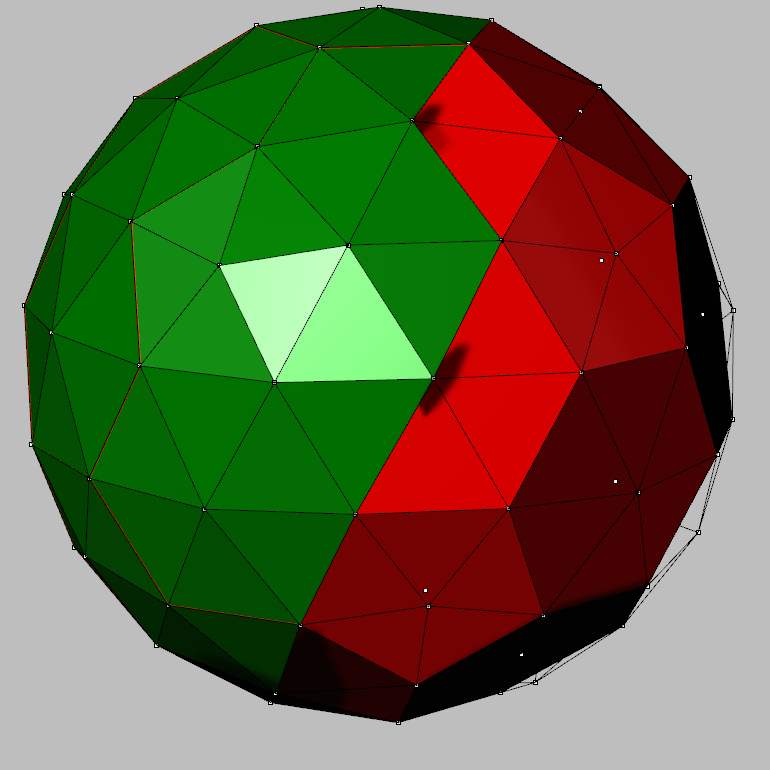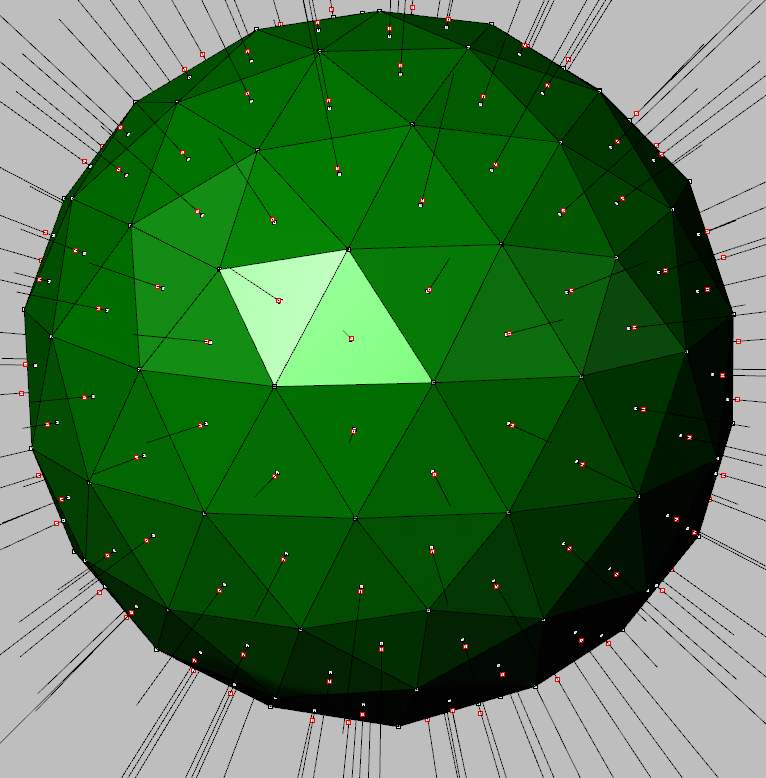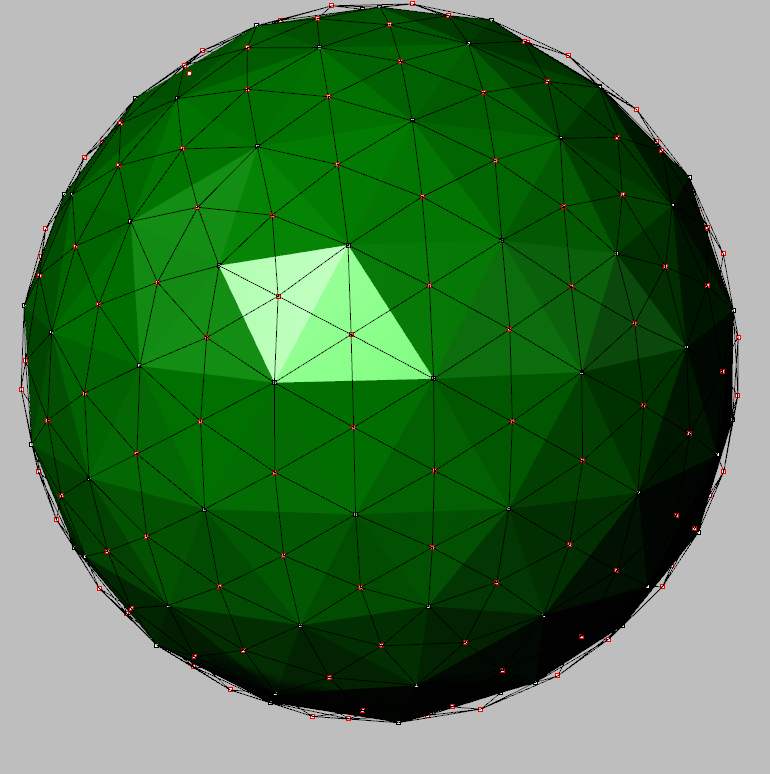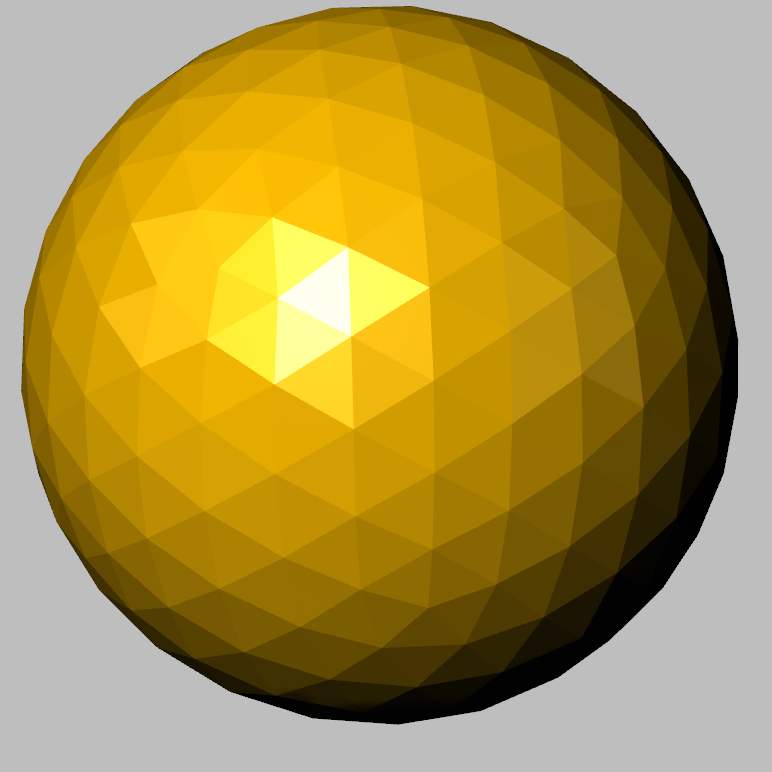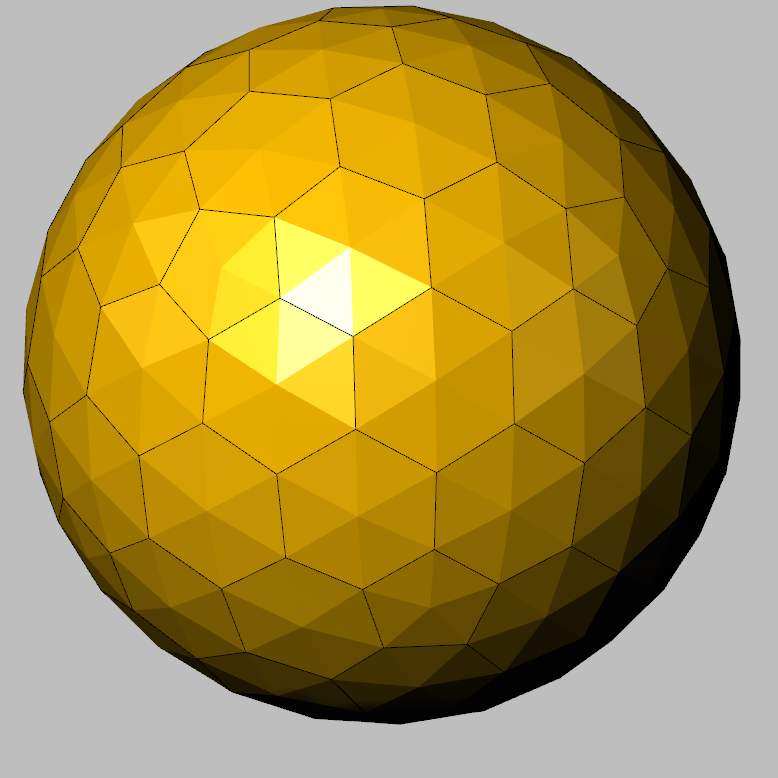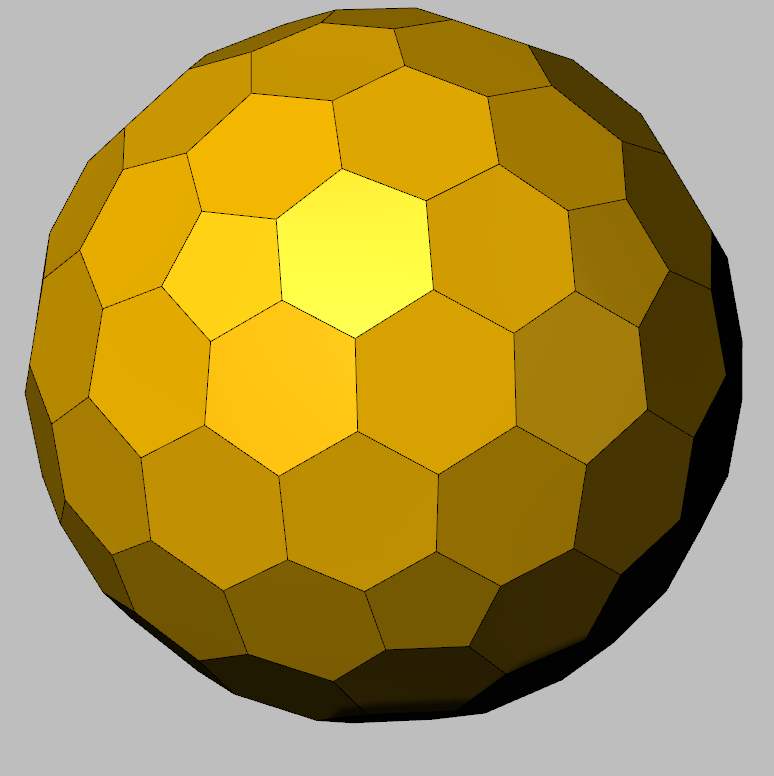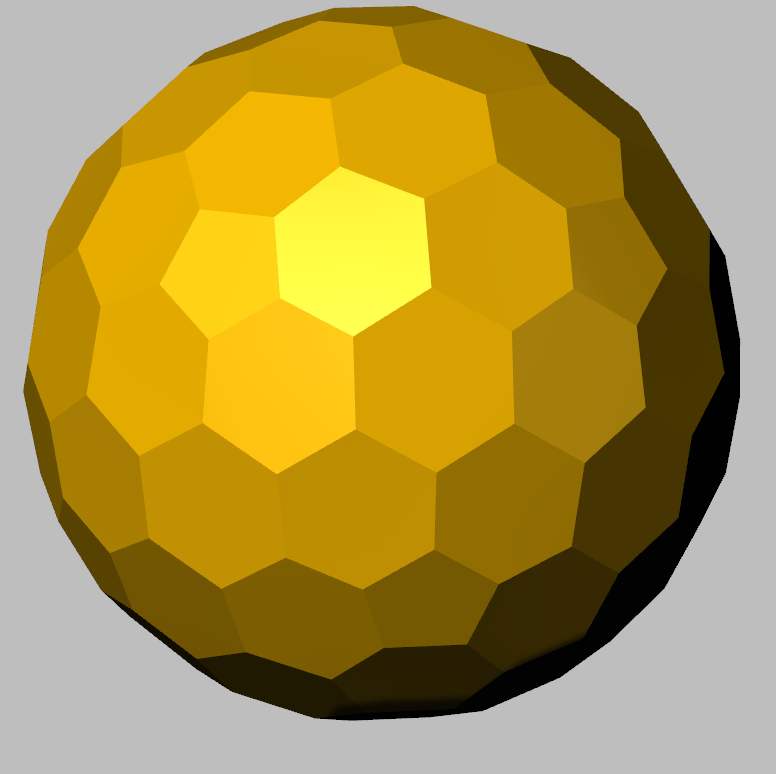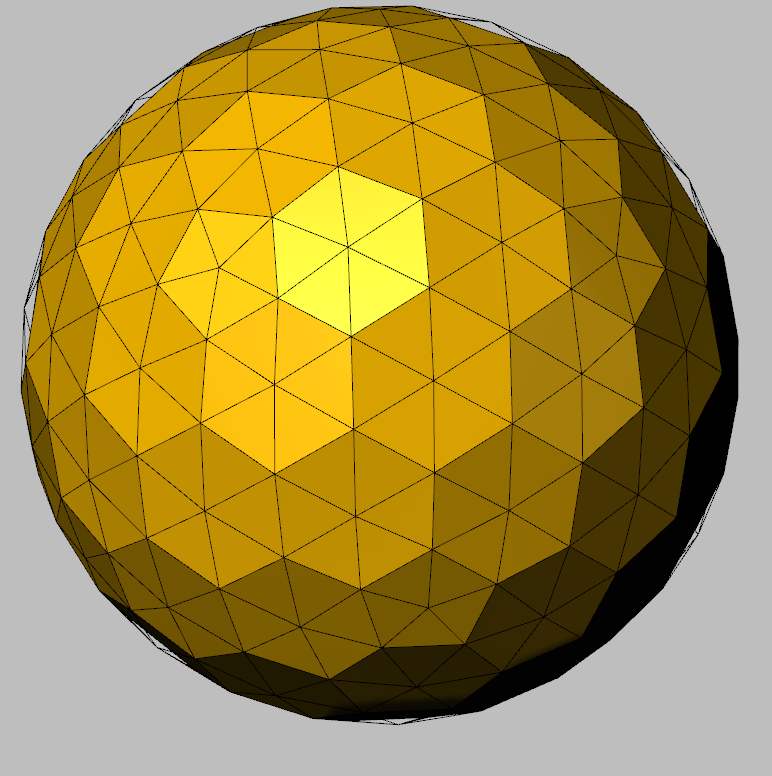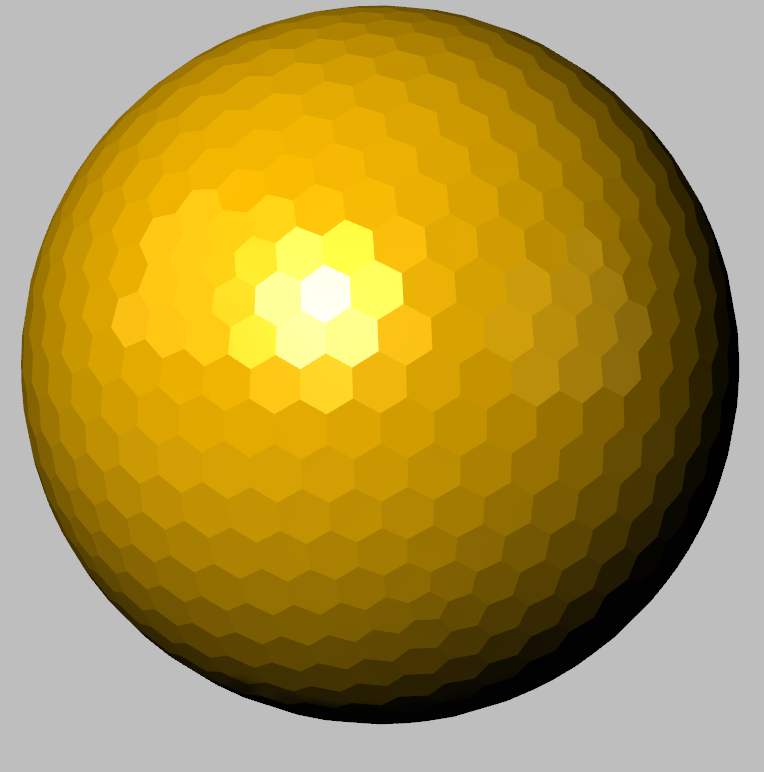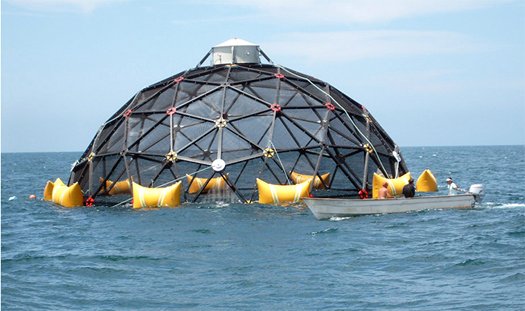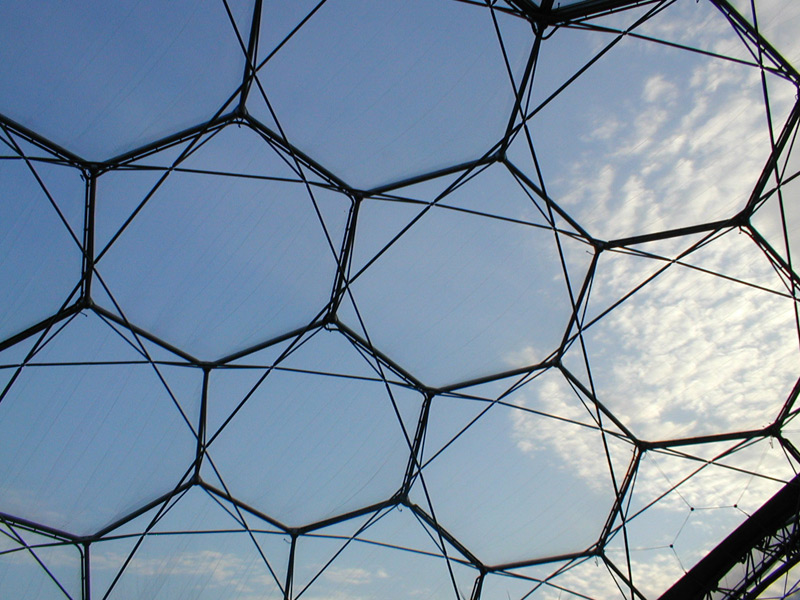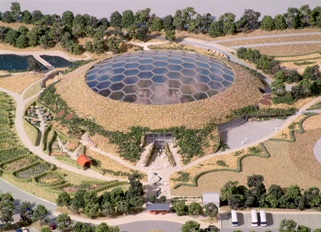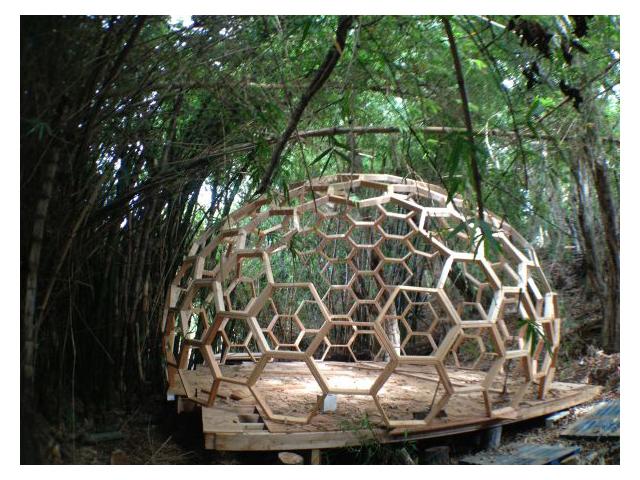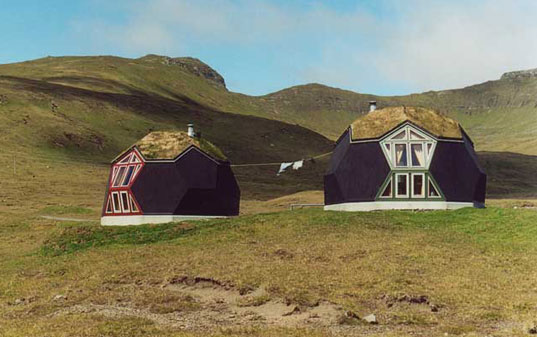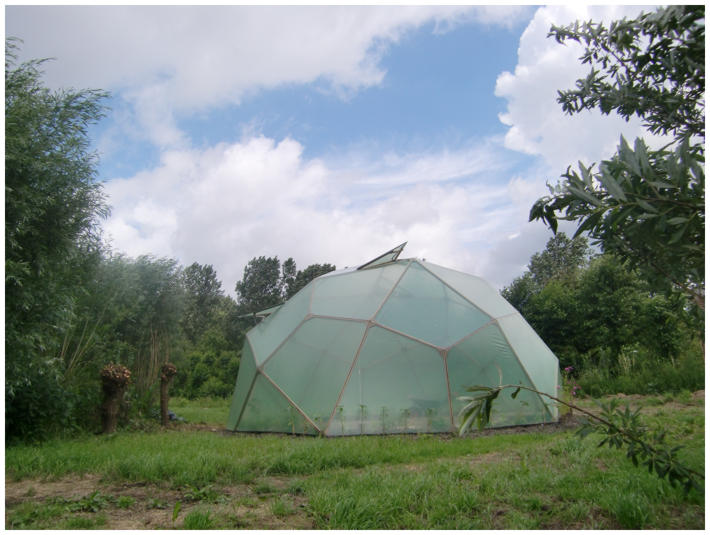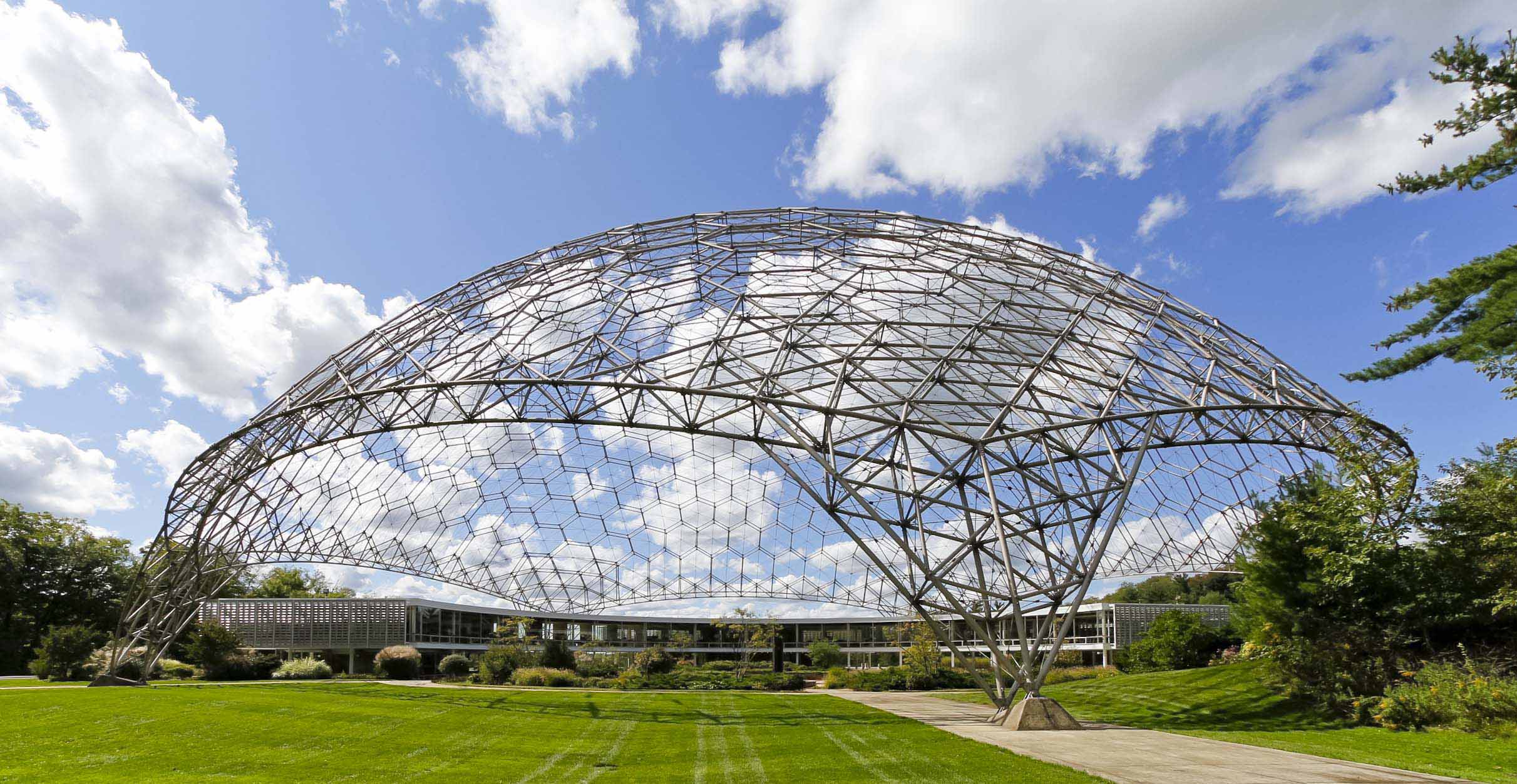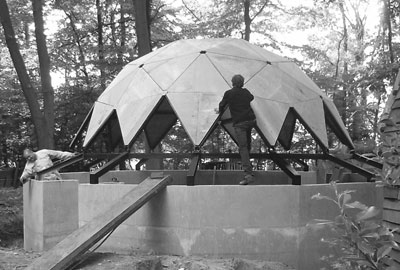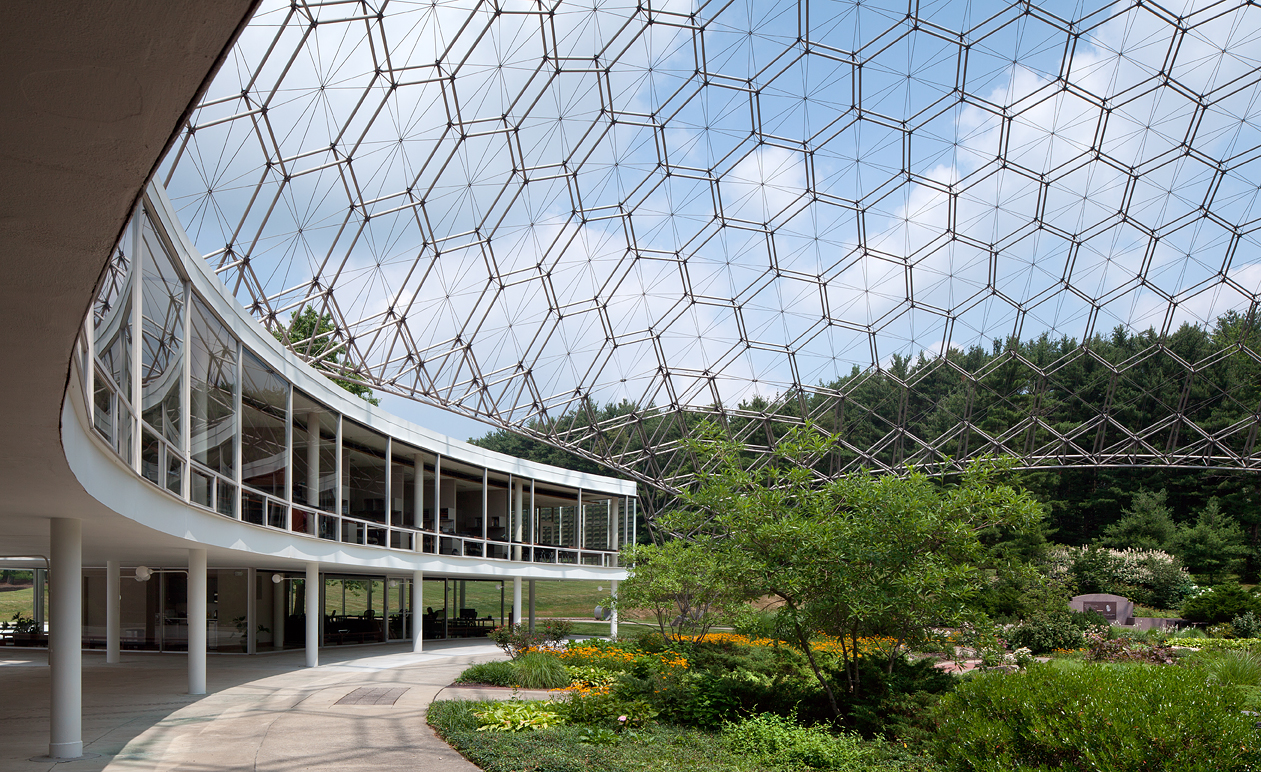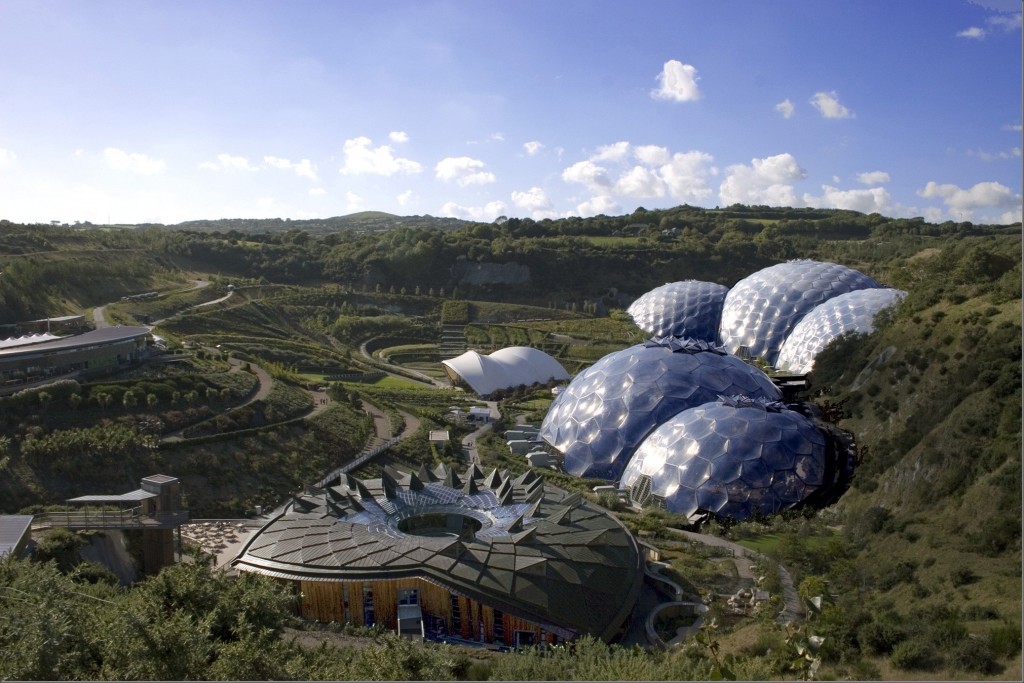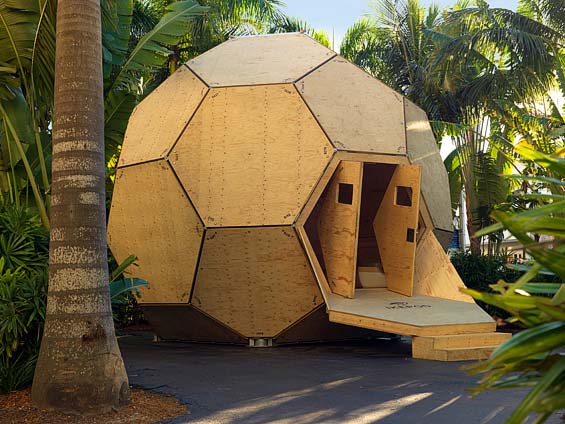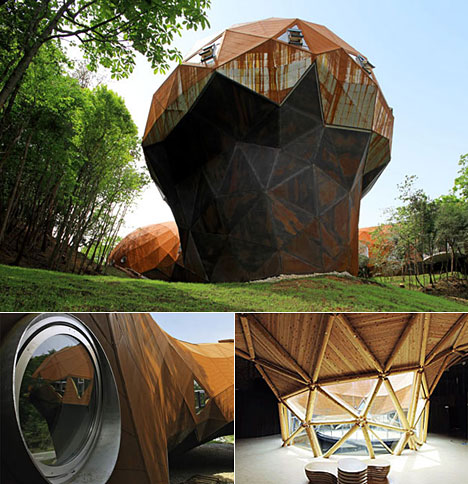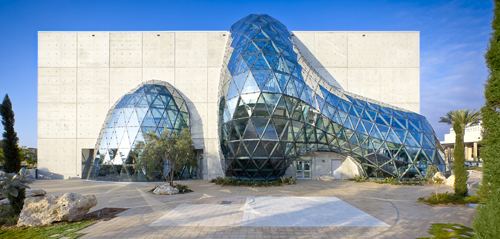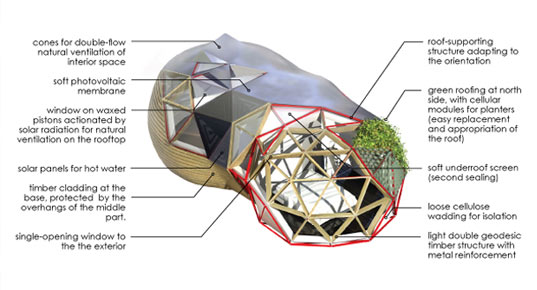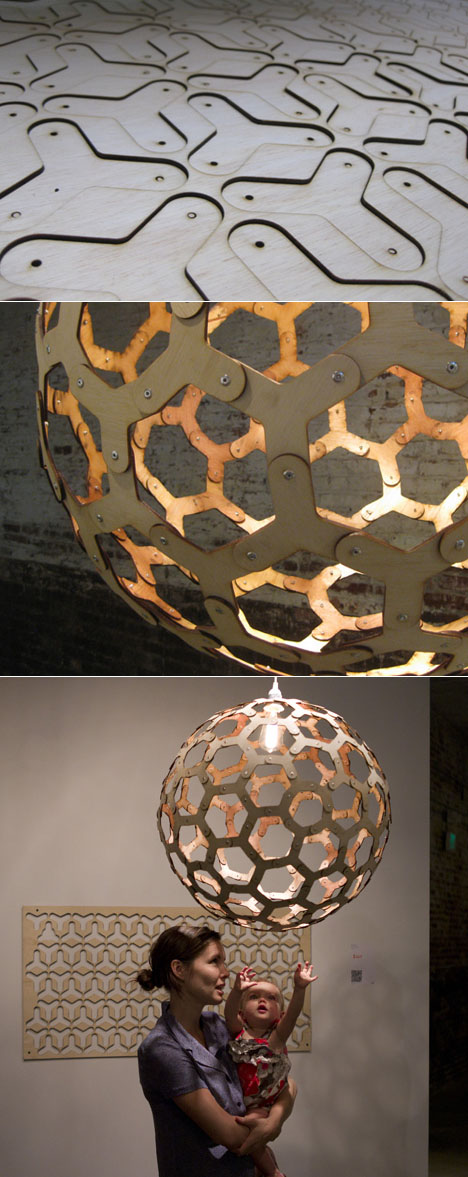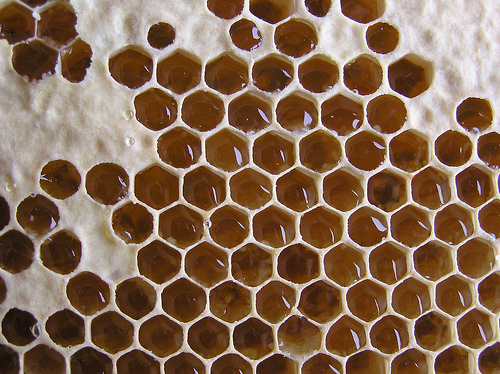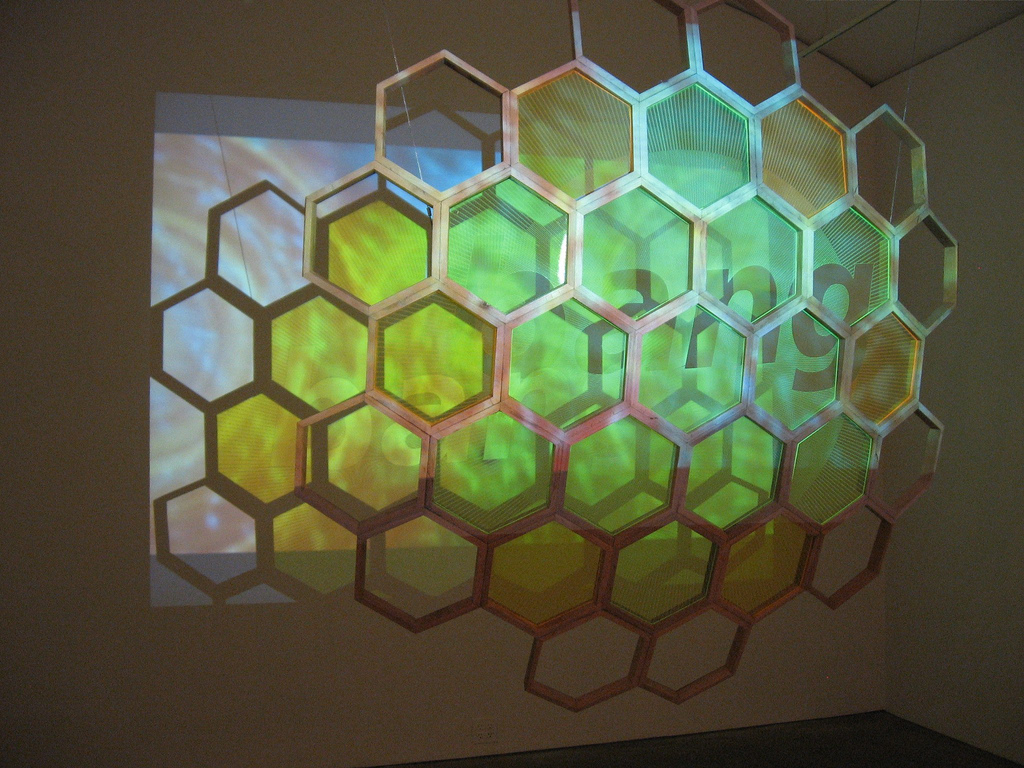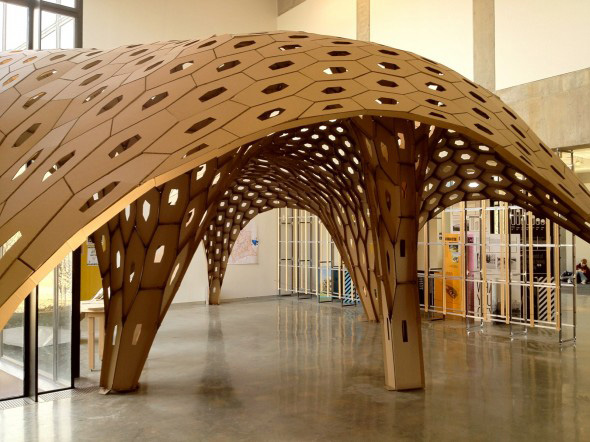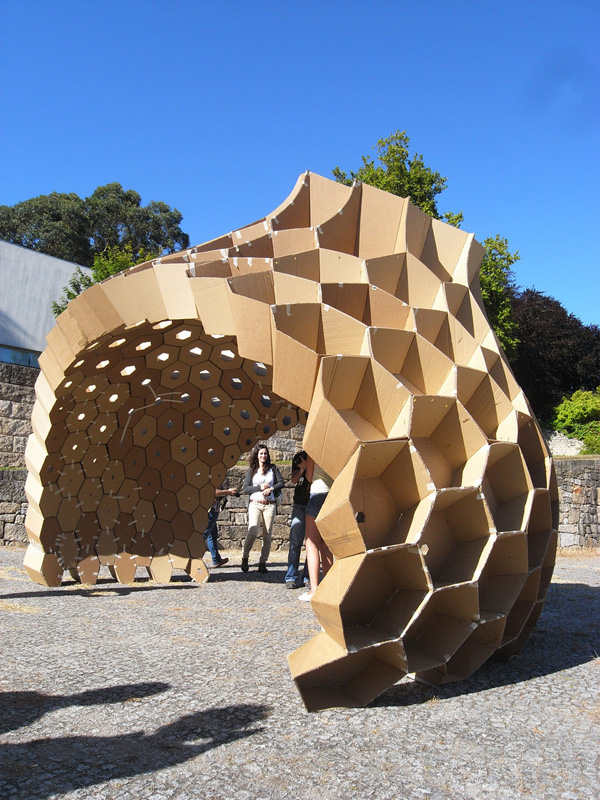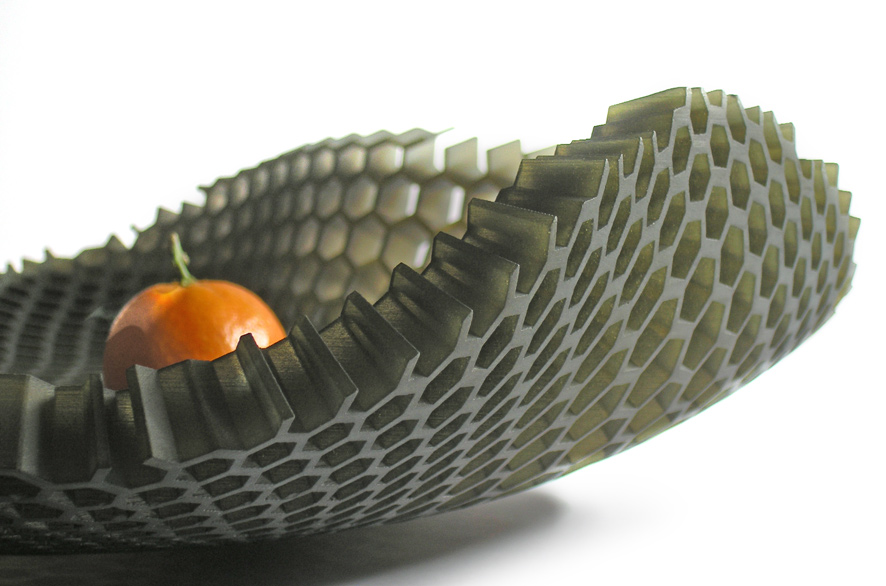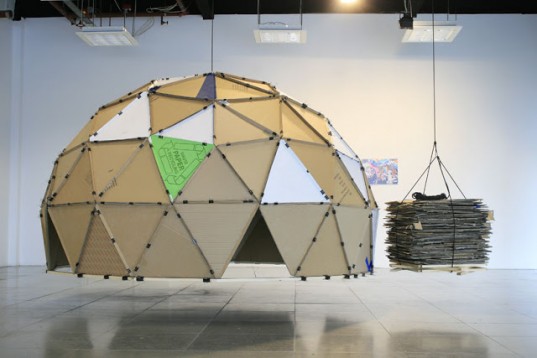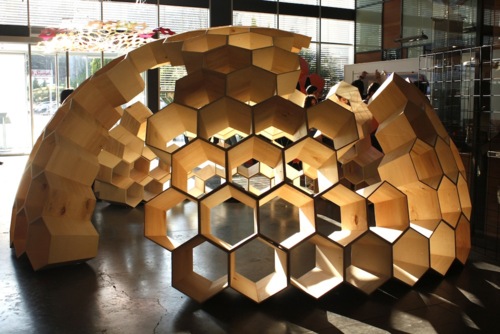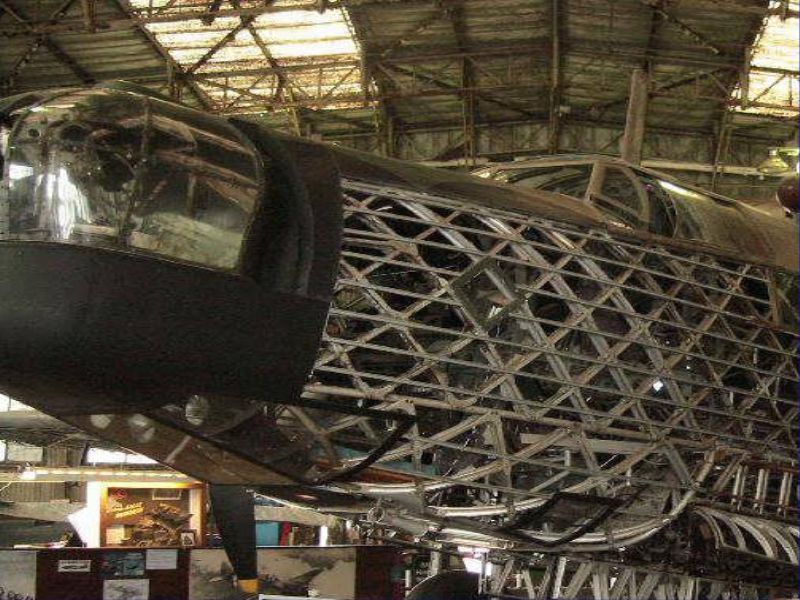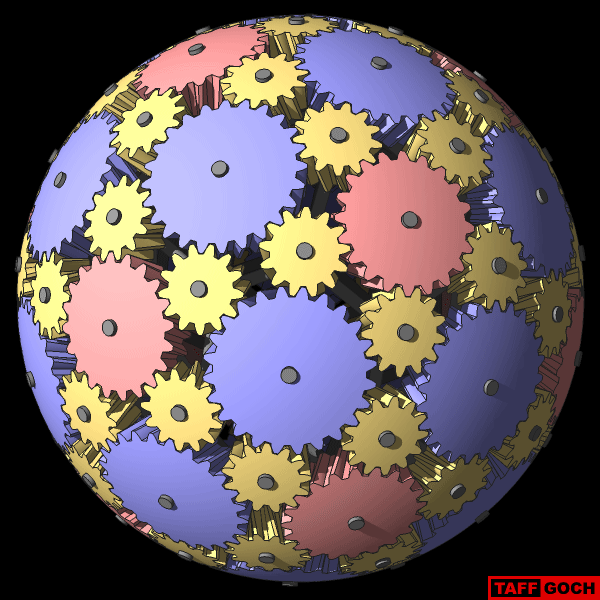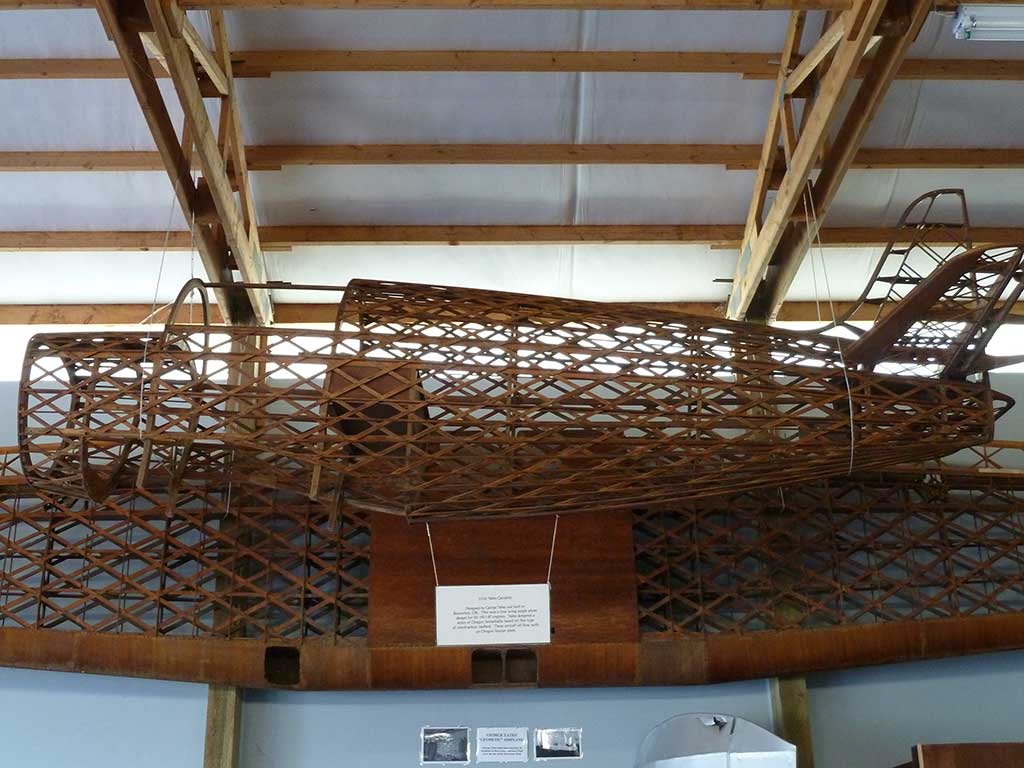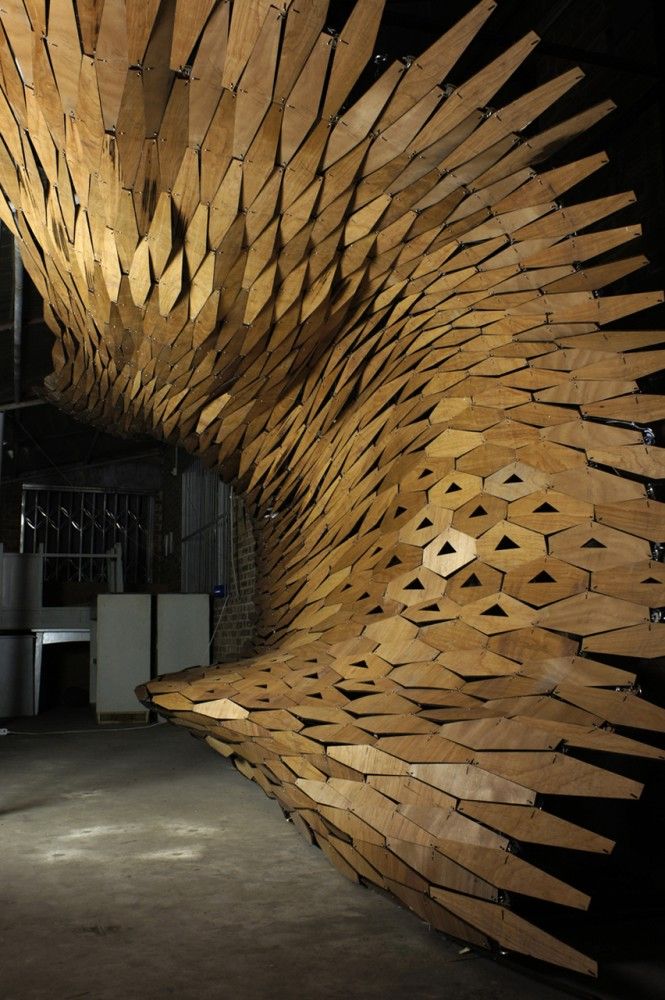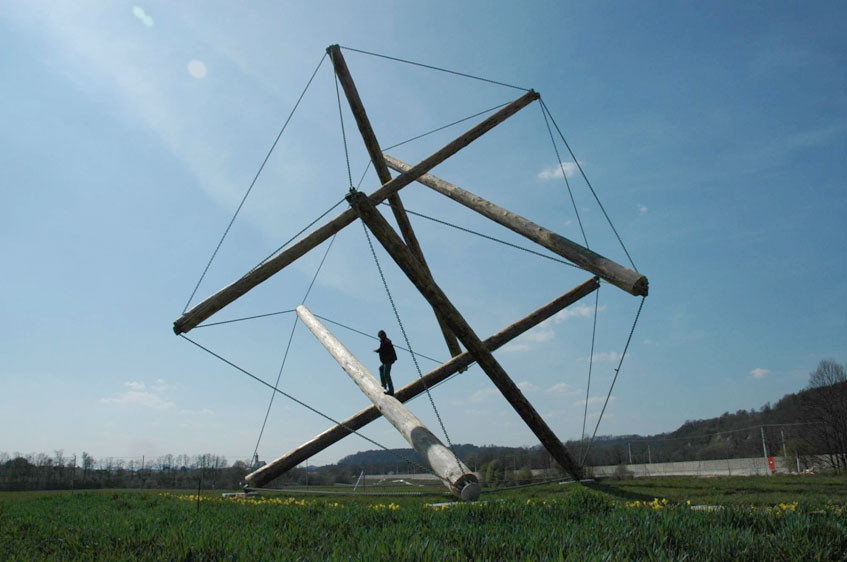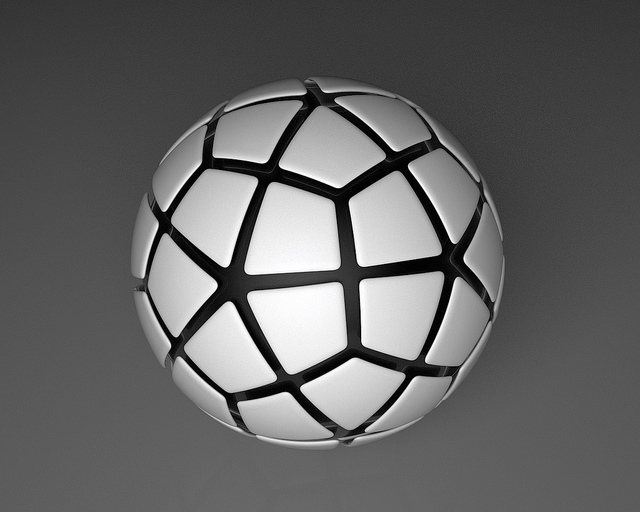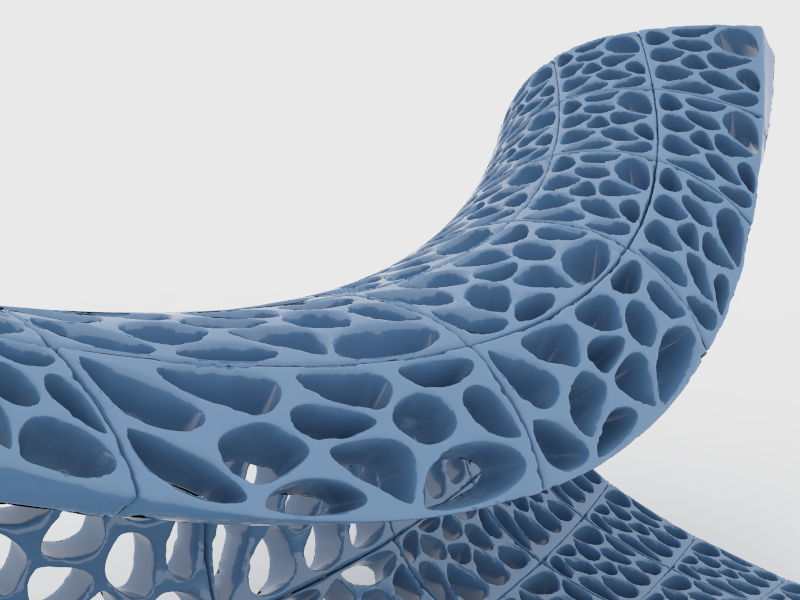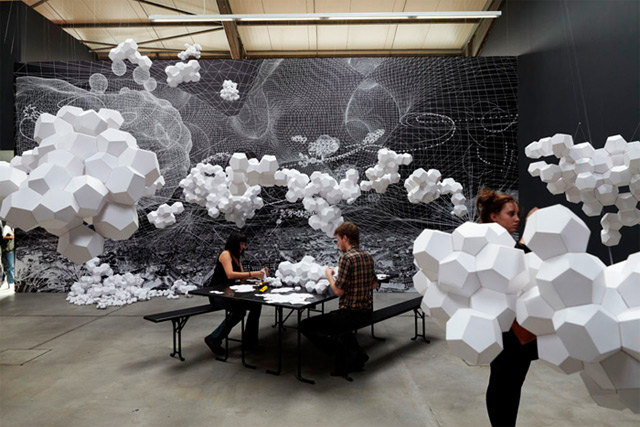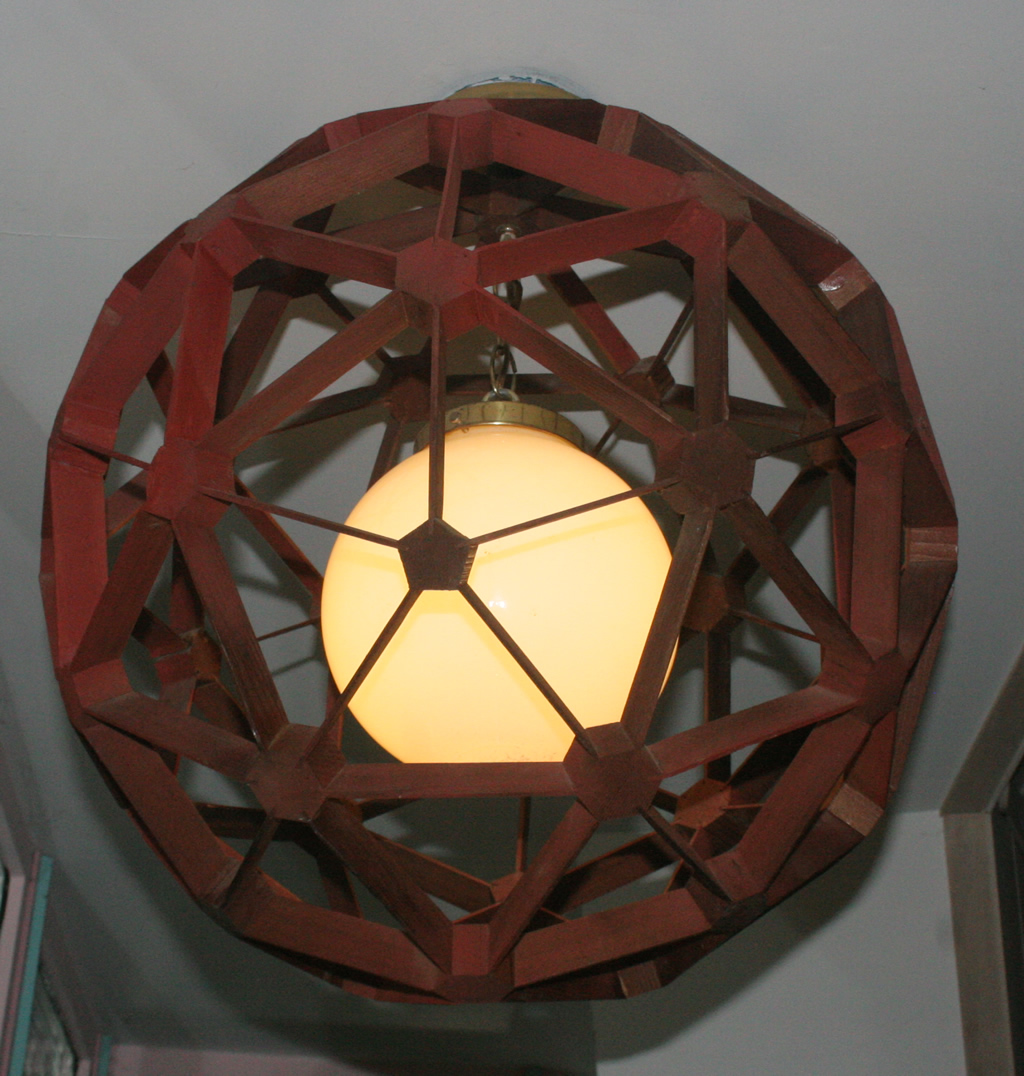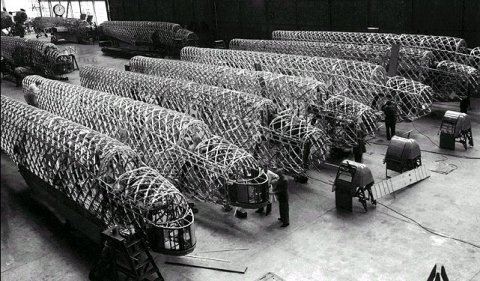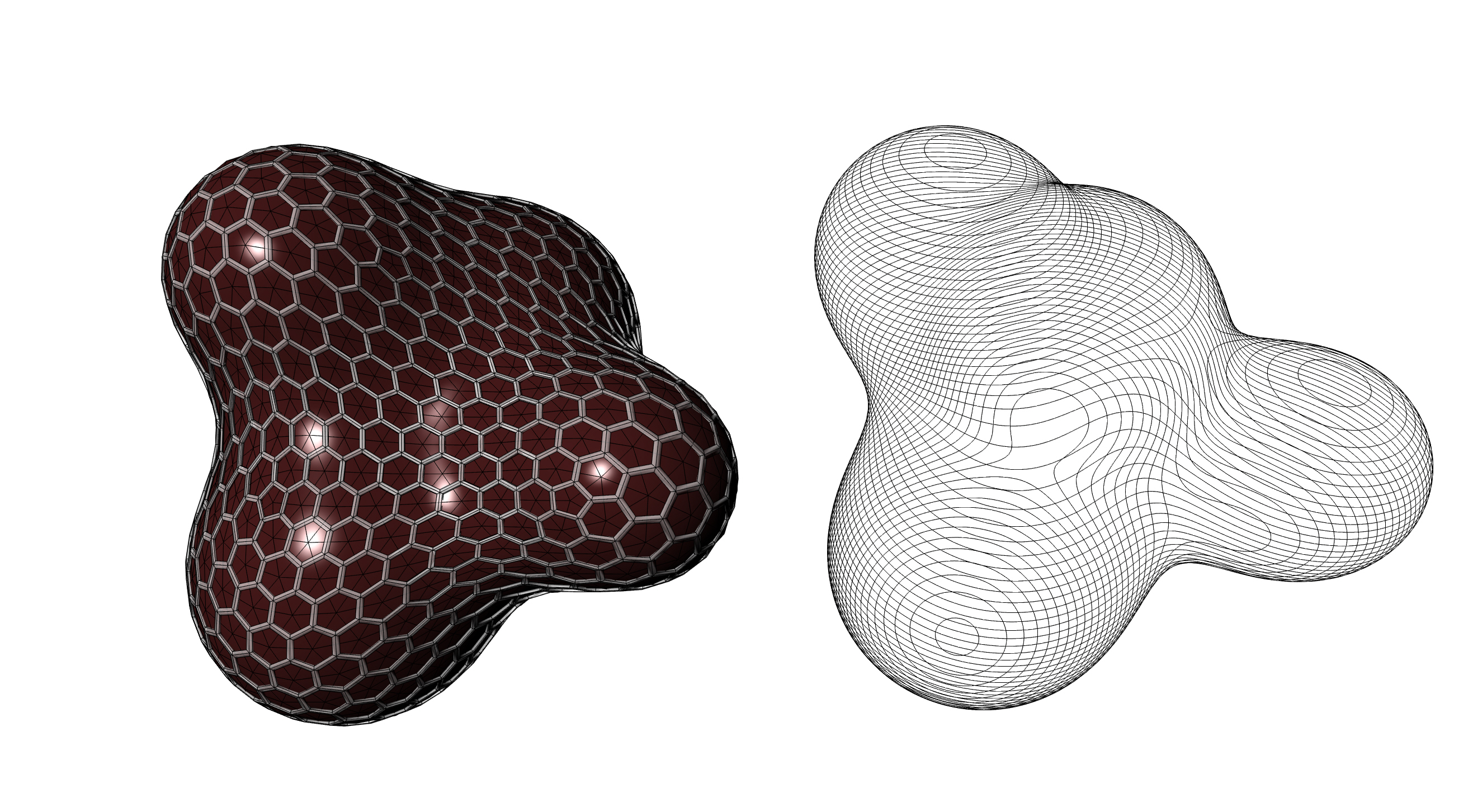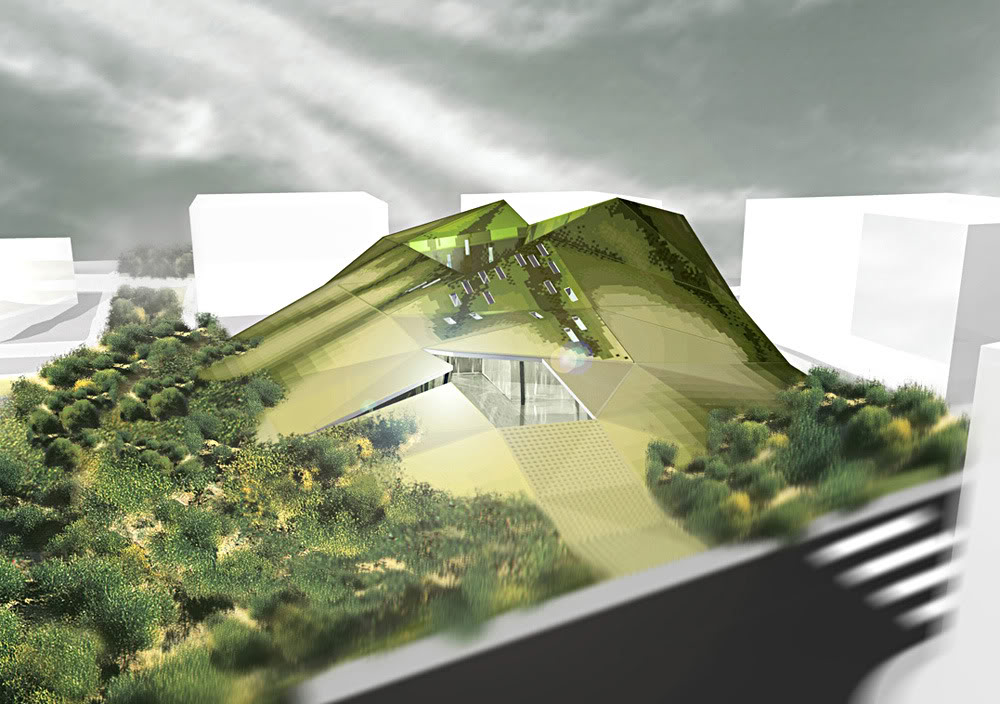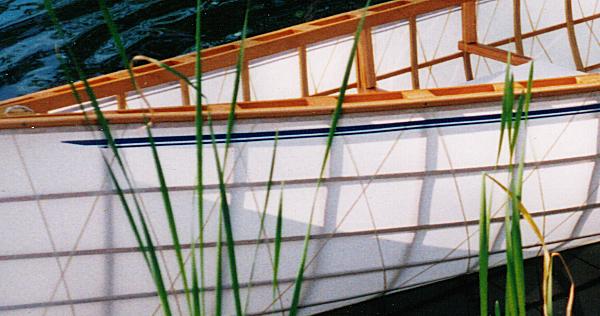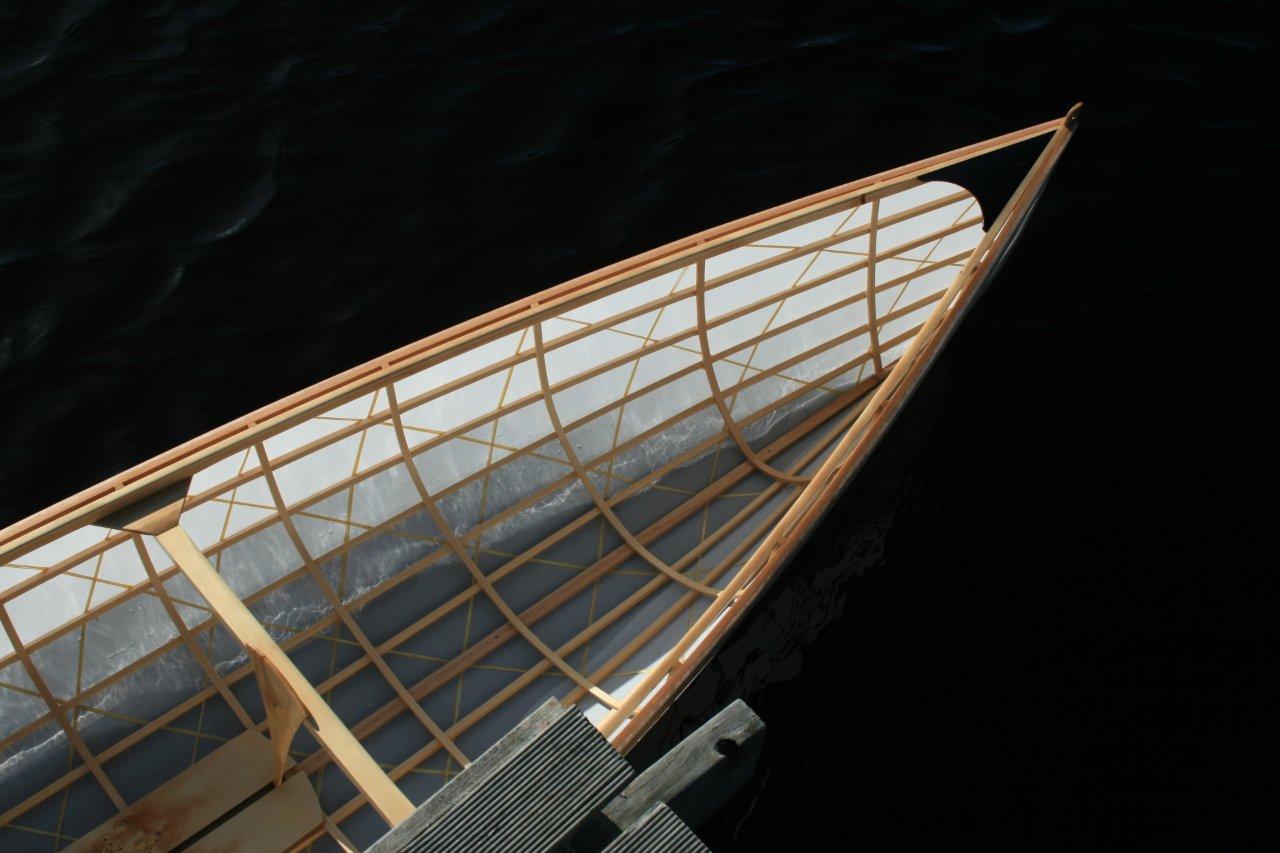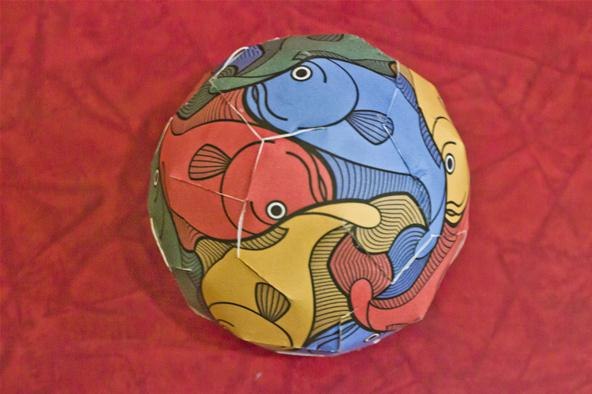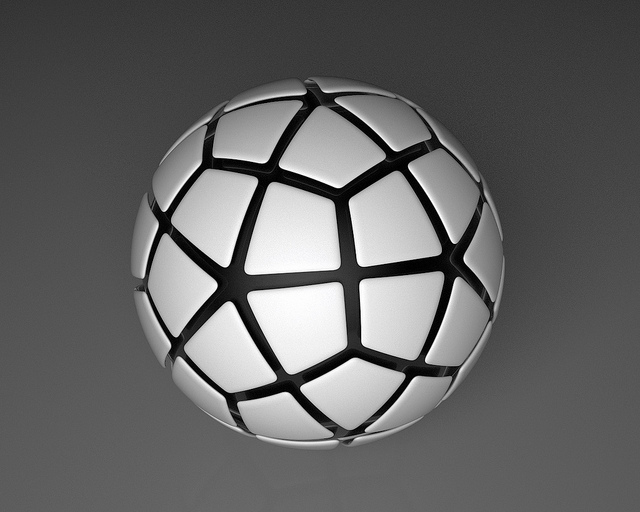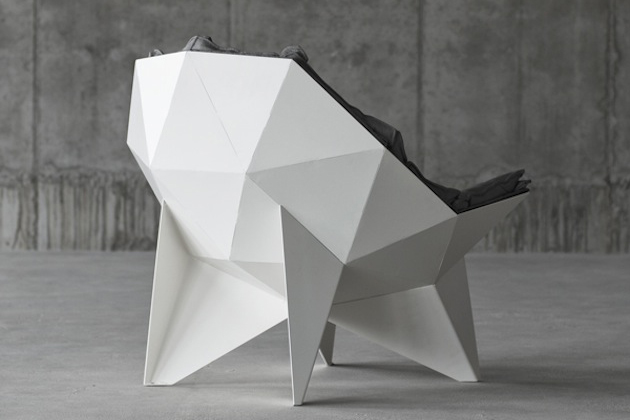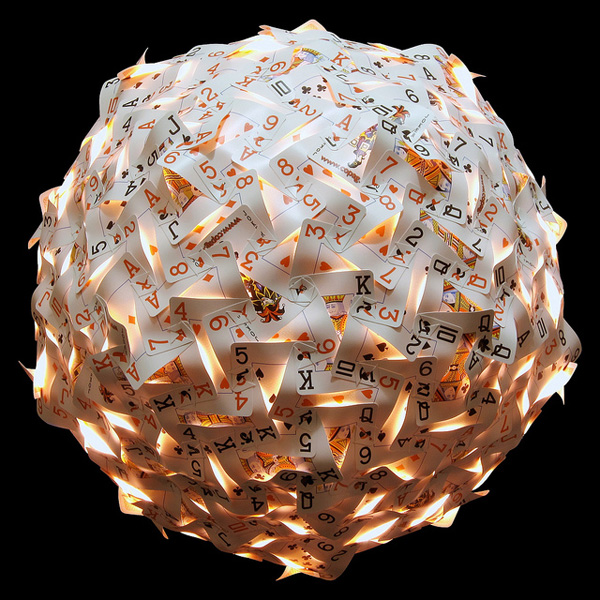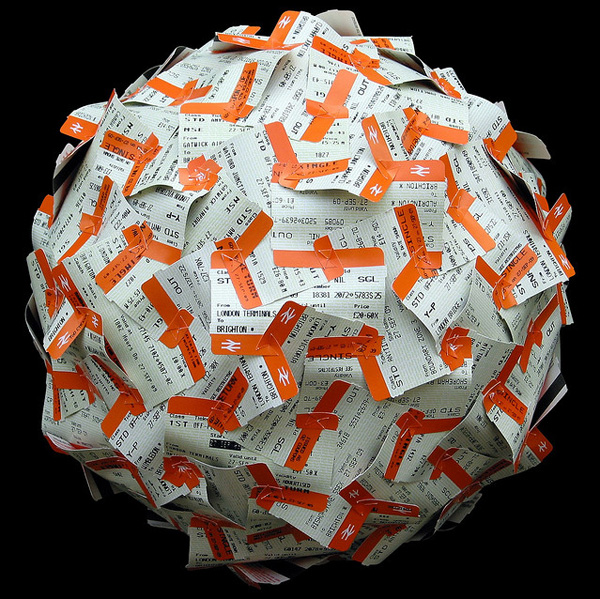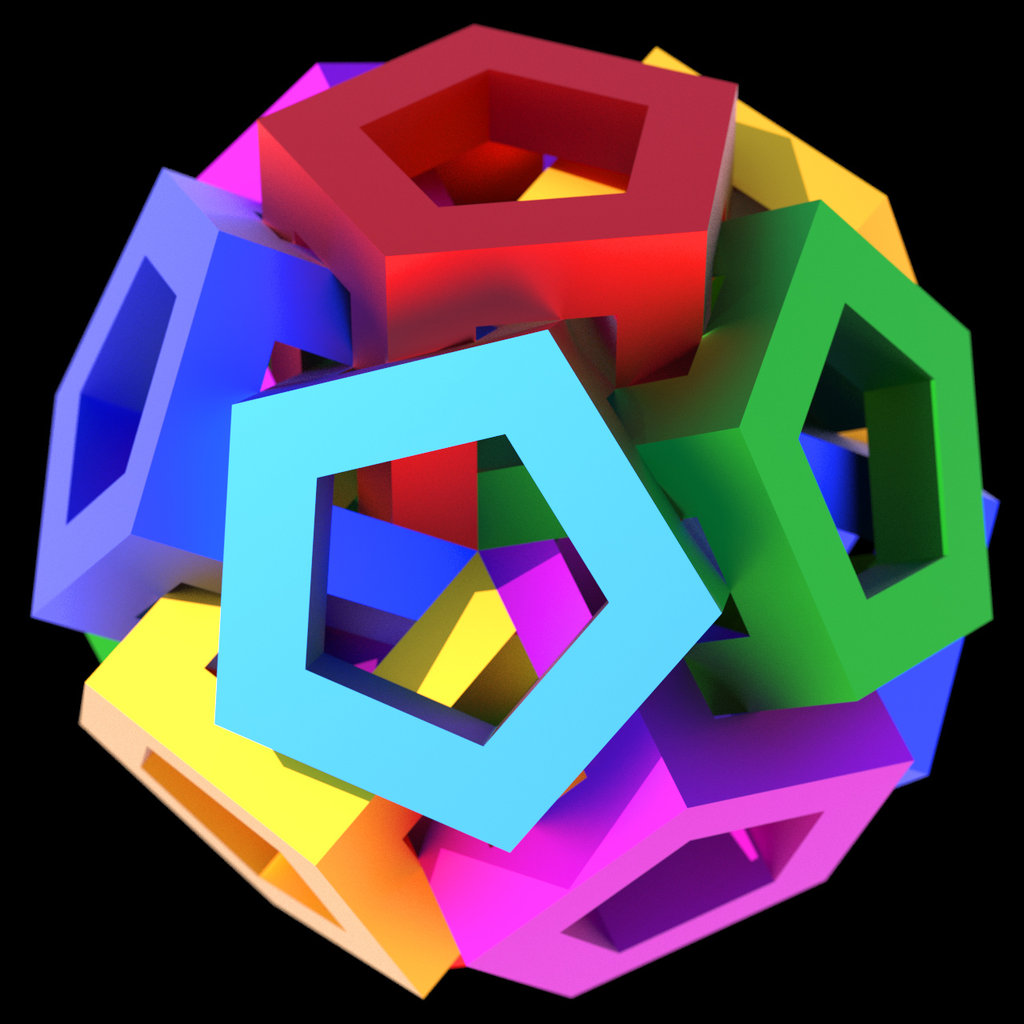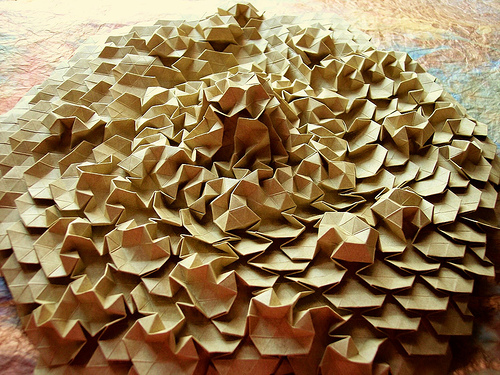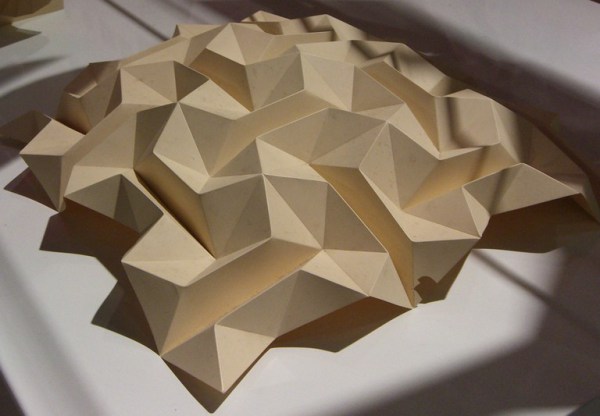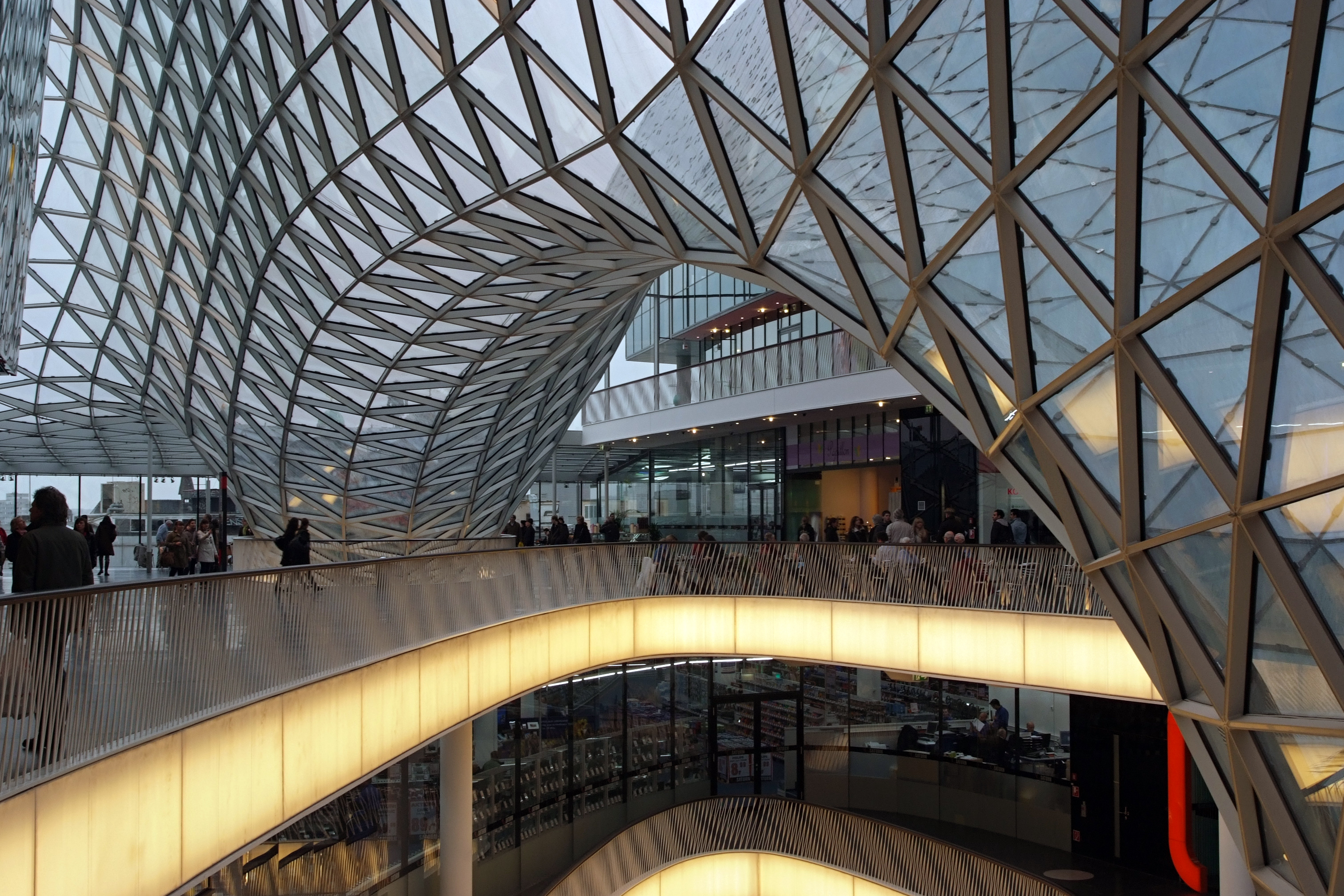Geodesic domes, tessellation, construction principle .
The internet is full of websites regarding geodesic tessellation of spheres, it is pretty complicated to really understand what is happening geometrically. This is an attempt at explaining what is happening, mostly visually. Hopefully this page add something as it took a lot of time ;-)
Geodesic = The shortest path between two points on a curved surface. (A straight line on a curved surface.)
The best known \ most used geodesic, might be the great-circle which is widely used in navigation and represents the shortest route from point A to B on Earth.
Buckminsterfuller started dividing spheres into semi-equilateral triangles using great circles. It has found some other adaptations like the aerolite canoe construction and some other architectural designs.
The Buckminsterfuller tessellation.
The fascination of Buckminsterfuller with light weight dome construction for living accommodation has resulted in a separate niche in architecture. The famous 1960's book "Shelter" and the "Whole world catalogue" series helped dome construction flourish, within a specific group of selfbuilders. This group and followers helped with the mathematics of geodesic tessellation of spheres.
The basic shapes.
Icosahedron, the dual of the icosahedron the Dodecahedron, Truncated Icosahedron which is the dual of the T3 geodesic. Just the basic geometry.
The geodesic dome rules.
- The result of incremental triangular tessellation depends on the starting shape. (most modern tessellations are based on the icosahedron or truncated icosahedron).
- The class I, II, III tessellations systems are based on the 12 pentagon corner, sphere division (dodecahedron) which is the basis of the Buckminsterfuller geodesic system. Each sub-division of the main-sphere division triangle edges results in a new tessellation, basically "ad infinitum".
- Each triangular subdivision has what is called a dual. This dual is the spherical tessellation consisting of pentagons and hexagon like sub-surfaces. The hexagons are only really flat and symmetrical hexagons when they are in the centre of two pentagons, which is only possible in class I. Visually it is like the pentagons retreat in their corner and the resulting space is filled with the hexagons: Dodecahedron to truncated icosahedron, to the dual of T4.
- Basically any tessellation within the spherical triangles between the centroids of the pentagon faces is possible in this system. In this case the 20 spherical faces are the tiles of the tessellation.
The below pictures help to illustrate the rules of geodesic tessellation and hopefully help you design your own geodesic dome.
From the internet.
What fantastic structures can geodesic domes be!
The 12 corners and 20 triangular sphere sections underlying the Buckminsterfuller system.
Basically the tessellation of Buckminsterfuller always consists of 20 sphere fragments with 12 cornerpoints and 6 rotation axis. The dodedahedron is the base of the dual and the icosahedron the base for the geodesic. The dual is always a level less detailed than the triangular geodesic sphere.
Buckminsterfuller Dome tesselation system in Rhino 3D.
Some images to show you what happens when the triangular sub-division is done in 3D. From some of the images you can also clearly see that with each step the tessellated shape gradually approaches the circumferential sphere. With the T15 (subdivision of 15 on each side) the maximum distance from a triangle face to the sphere is already negligible.
How to construct a geodesic dome using the centroid method.
This method differs from the well known Class I and II tessellation methods in that it is a repetitive process that gradually "grows" in the number of faces, with each subdivision. There is no shortcut and the growth is faster than the standard incremental tessellation.
The method might be called the centroid method, or geometric centre method. It uses the intersection of the perpendicular curve through the centroid of each triangle with the circumscribed sphere (circumsphere) as staring point for the next "layer" of geodesic triangles.
The below images should explain this complex definition.
The result is a tessellation that switches from class I to class II to class I with each iteration.
In Rhino 3D.
Geodesic Architecture.
Many new geodesic structures have been build, which have a similar look as the geodesic dome structures, thanks to modern 3D software, which allow for relatively easy complex 3D geodesic curve generation. The strict definition of Geodesic curves (the shortest distance between 2 points on a curved surface;
in Rhino 3d ) seems to have slipped a bit to something like: "a triangular tessellation with nearly equilateral triangles".
Geodesic shapes.
There were aircraft with a geodesic rib structure. The Aerolite canoe construction with wooden ribs and unilateral carbon fibre geodesic tension-ribs is another example. The Aerolite construction is adapted for the streamline of a recumbent bicycle.
Interior designers have also used geodesic dome shapes, mainly for lighting and some furniture, but some have made bedroom cubicles.
Particularly interesting is the fabric like equilateral triangle plane.
Wind & Water Try, Play, Learn and Enjoy..


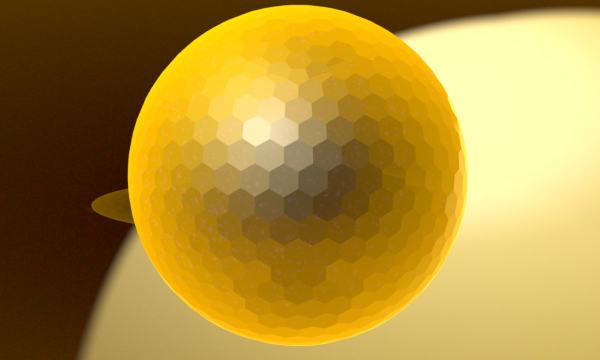 Geodesic design.
Geodesic design.
